By this point Sivir Akshan
Akshan Demacia is one of the most storied decks in Legends of Runeterra. Despite the legacy this archetype has, it rose from humble beginnings.
Demacia is one of the most storied decks in Legends of Runeterra. Despite the legacy this archetype has, it rose from humble beginnings.
Even as a very well-stated unit with two extremely powerful keywords, Sivir did not see much play during her release in the Empires of the Ascended expansion. Yet after patch 2.11.0, due to a slight Sivir buff, a slew of Ionia buffs, and the ingenuity of RubinZoo, Sivir found her first home alongside Zed . Sivir Zed was essentially a Papercraft Dragon
. Sivir Zed was essentially a Papercraft Dragon deck before PC Dragon existed, utilizing an (at the time) three-mana Flurry of Fists
deck before PC Dragon existed, utilizing an (at the time) three-mana Flurry of Fists instead.
instead.
Sivir Zed didn’t last long: Akshan was released soon afterwards, to usurp Zed's place as Sivir’s companion, yet the Shurima champions kept Ionia as their pairing region. Sivir Akshan
was released soon afterwards, to usurp Zed's place as Sivir’s companion, yet the Shurima champions kept Ionia as their pairing region. Sivir Akshan 
An actual Tier 0 deck existed at this time, Sivir Akshan Demacia, with +3/1 Shaped Stone and 6/4 Ruin Runner
and 6/4 Ruin Runner . The list just wasn’t refined yet – even with elite players like BBG and Kochua recognizing the potential, it would take some time to discover the correct 40 cards.
. The list just wasn’t refined yet – even with elite players like BBG and Kochua recognizing the potential, it would take some time to discover the correct 40 cards.
By the time the Rise of the Underworlds Seasonals rolled around it was understood that Sivir Akshan 
Following thatseason, 
Since Worlds last year, Sivir Akshan remained a flexible deck that could really shine in some metas, but it was however showing a serious decline. It barely received any support cards or buffs, sometimes got hit by nerfs targeting other Demacia or Shurima decks, and was slowly power-crept by new cards – all of this making Sivir Akshan just a bit too fair of a deck to be a real meta contender.
This all changed with the release of Equipment. Darkin Equipment are some of the most powerful cards in the game and are a great compliment to Sivir , Akshan
, Akshan , and Demacia.
, and Demacia.
I believe that Sivir Akshan has been a strong meta contender for the past few patches, boasting a flexible and proactive gameplan allowing most matchups to be favorable, even if not by significant amounts. Combined with tons of room for skill expression, Sivir Akshan is an extremely rewarding deck to have in your back pocket.
Sivir Akshan Demacia – Card Breakdown
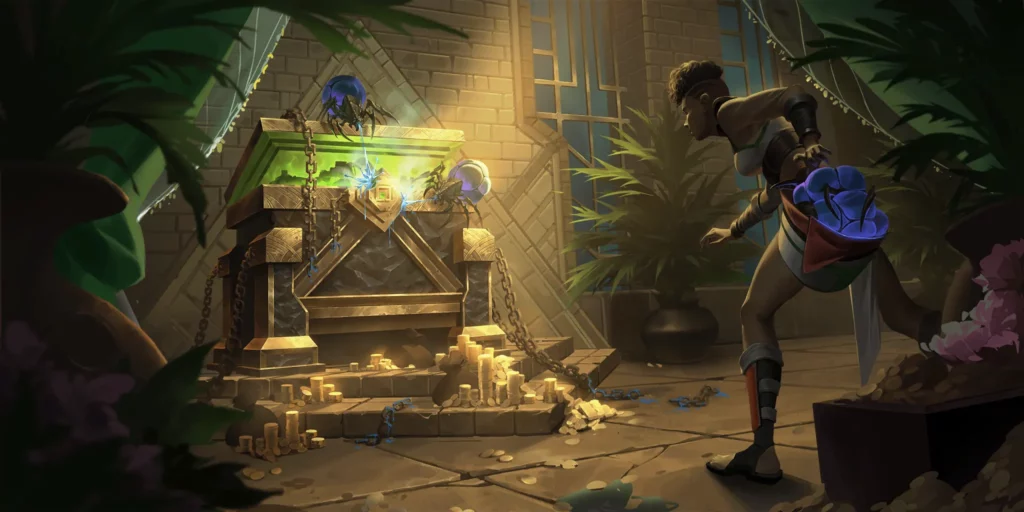
Let's start by showcasing two different takes.
Author's Choice
This is my version of Sivir Akshan, which I believe is best teched for the general field, and the one I will detail in this breakdown.

13 cards

27 cards
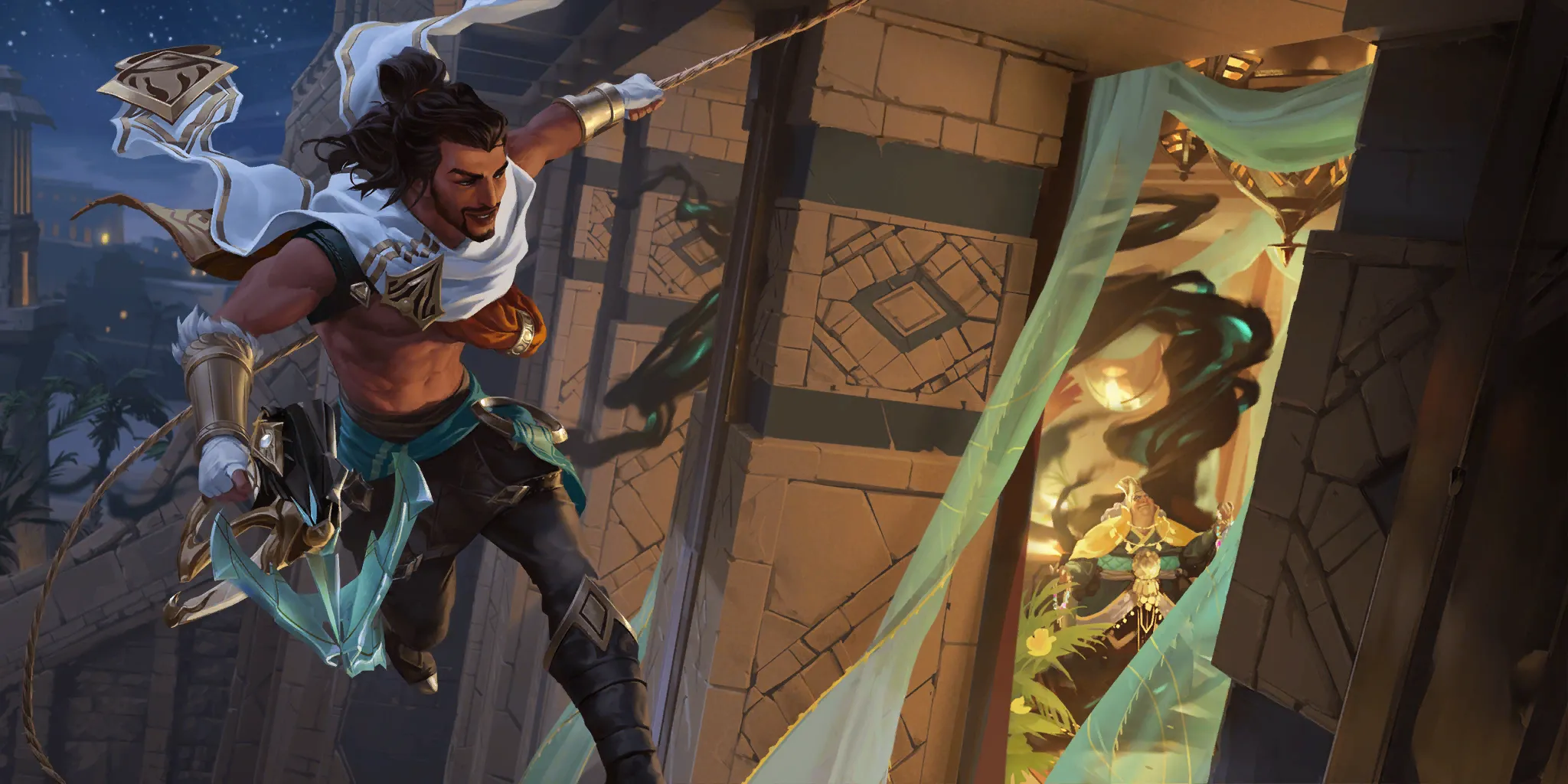
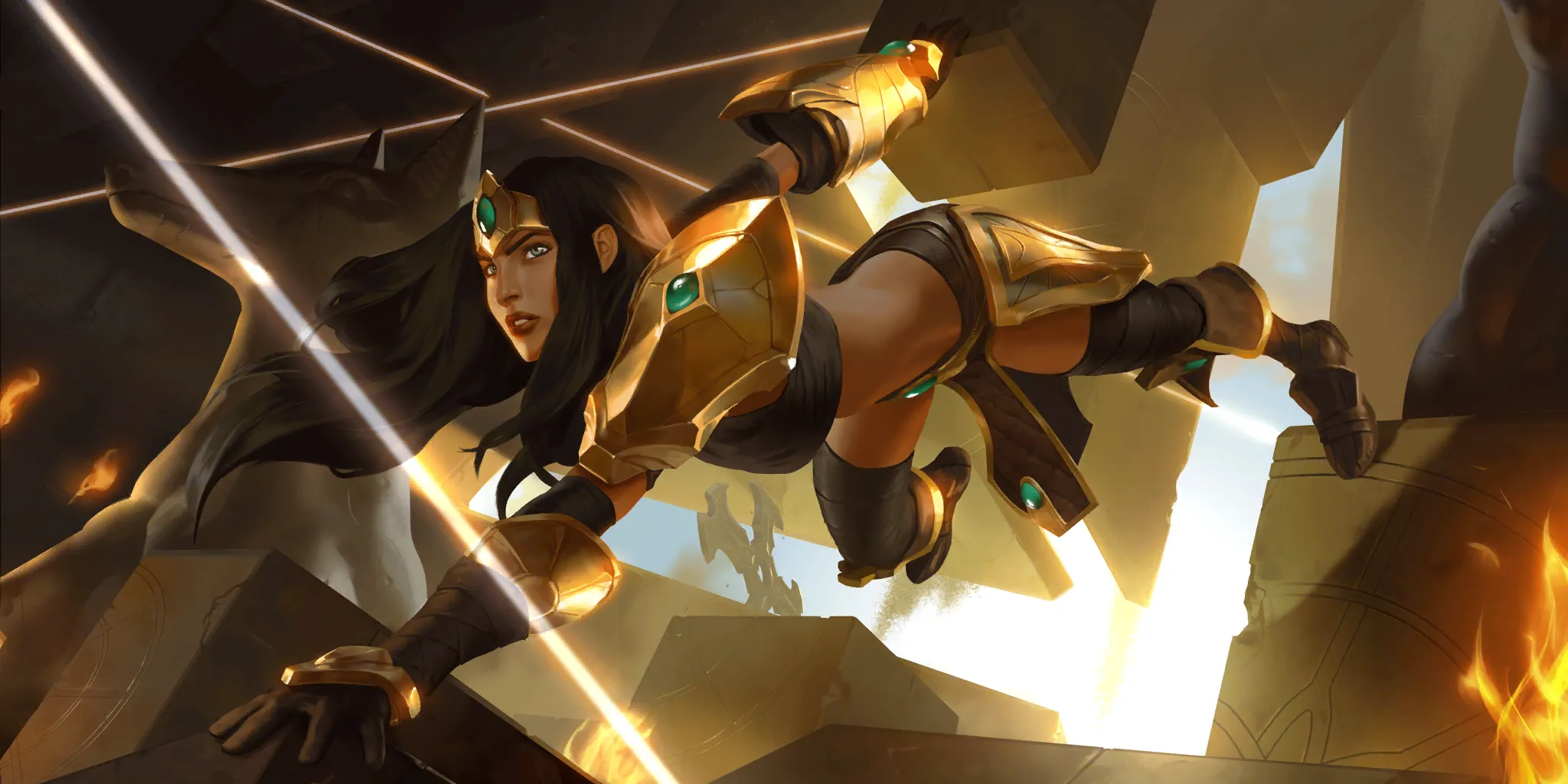
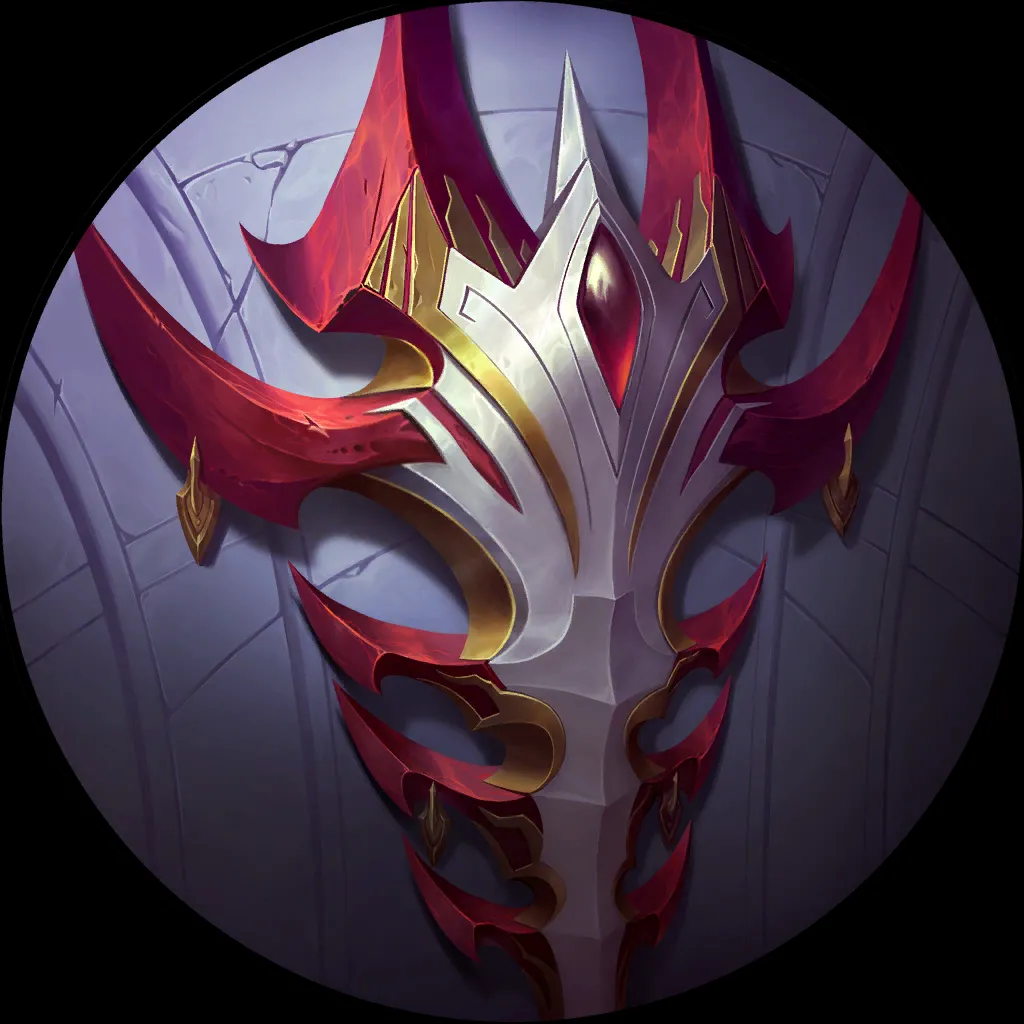
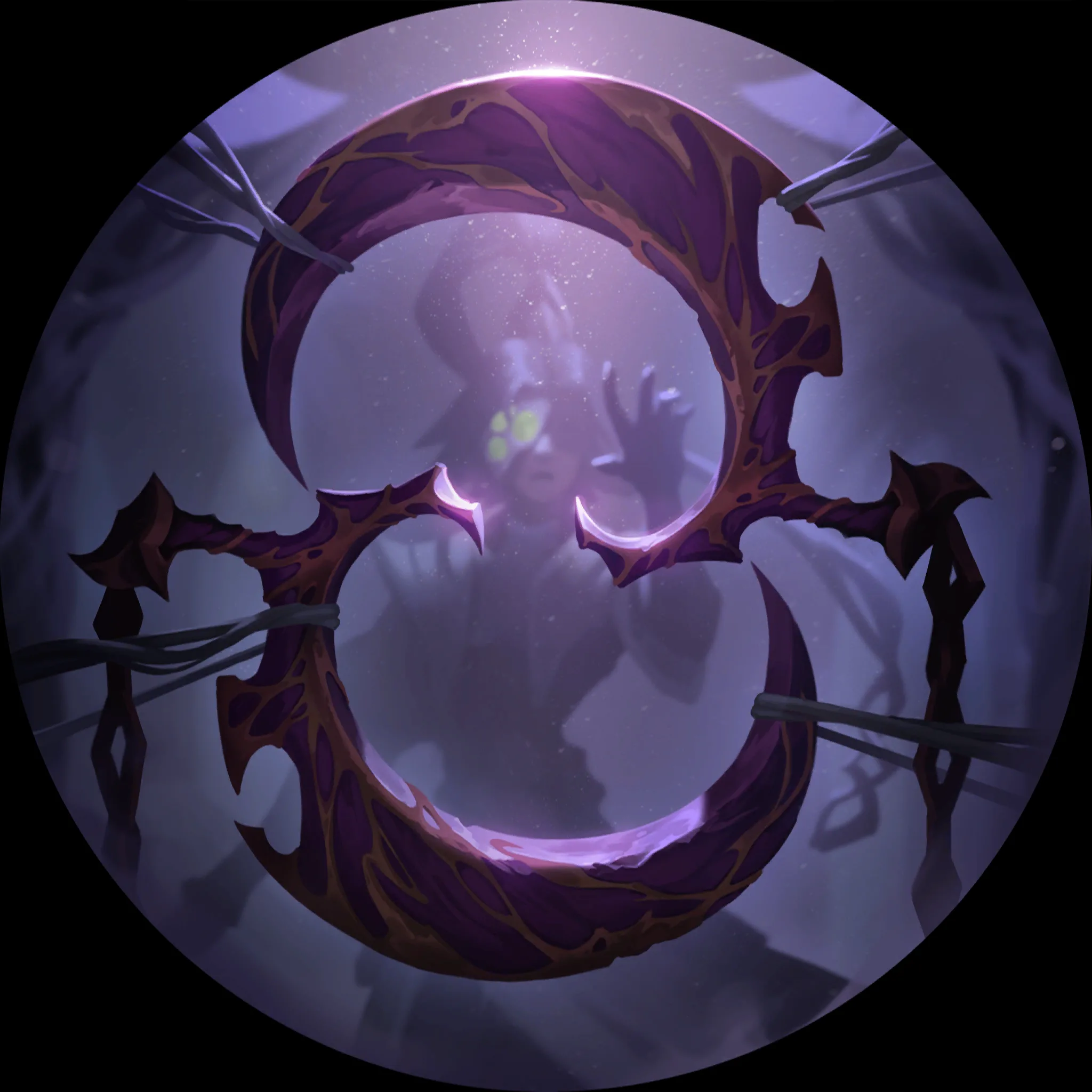
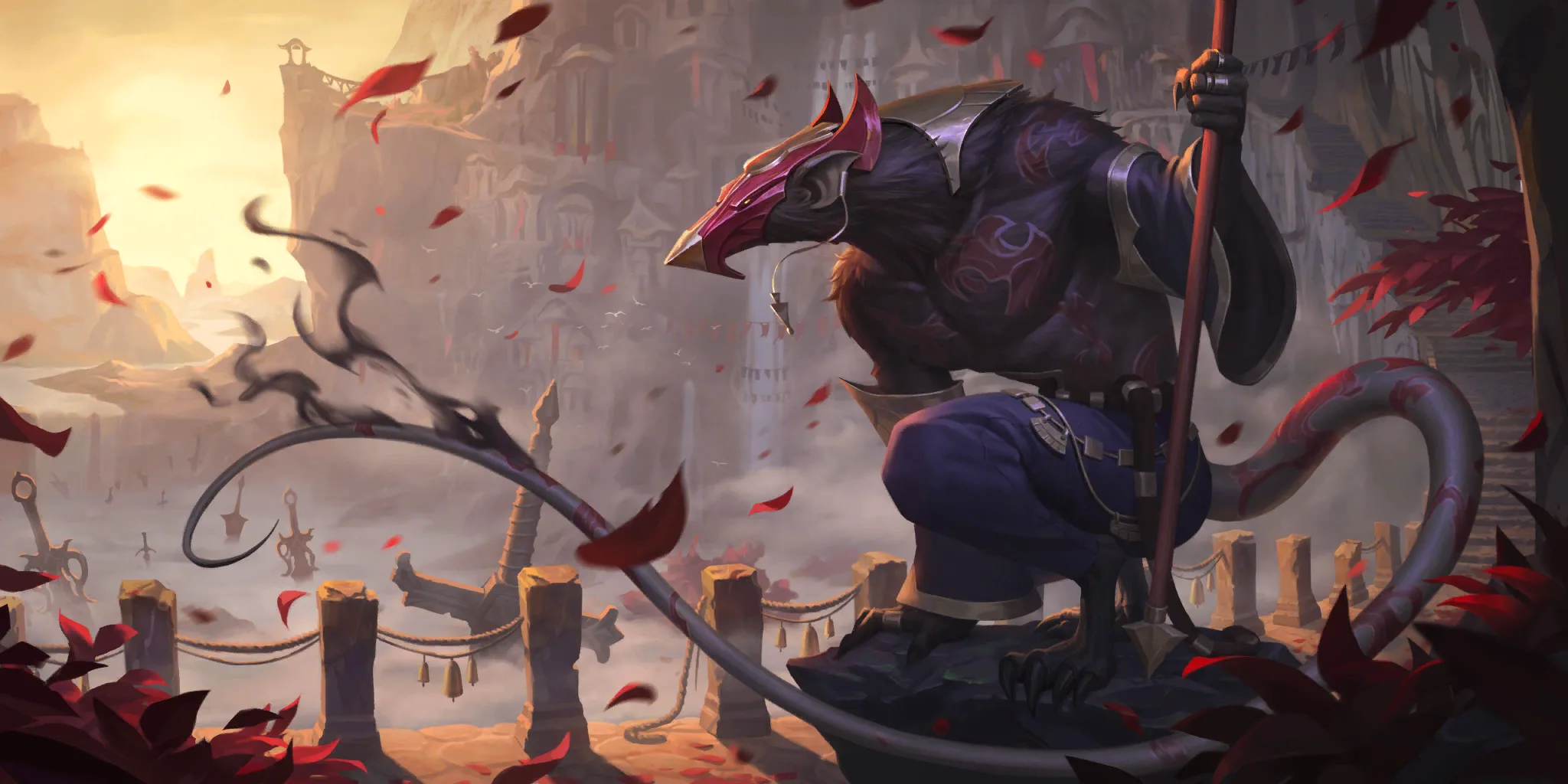
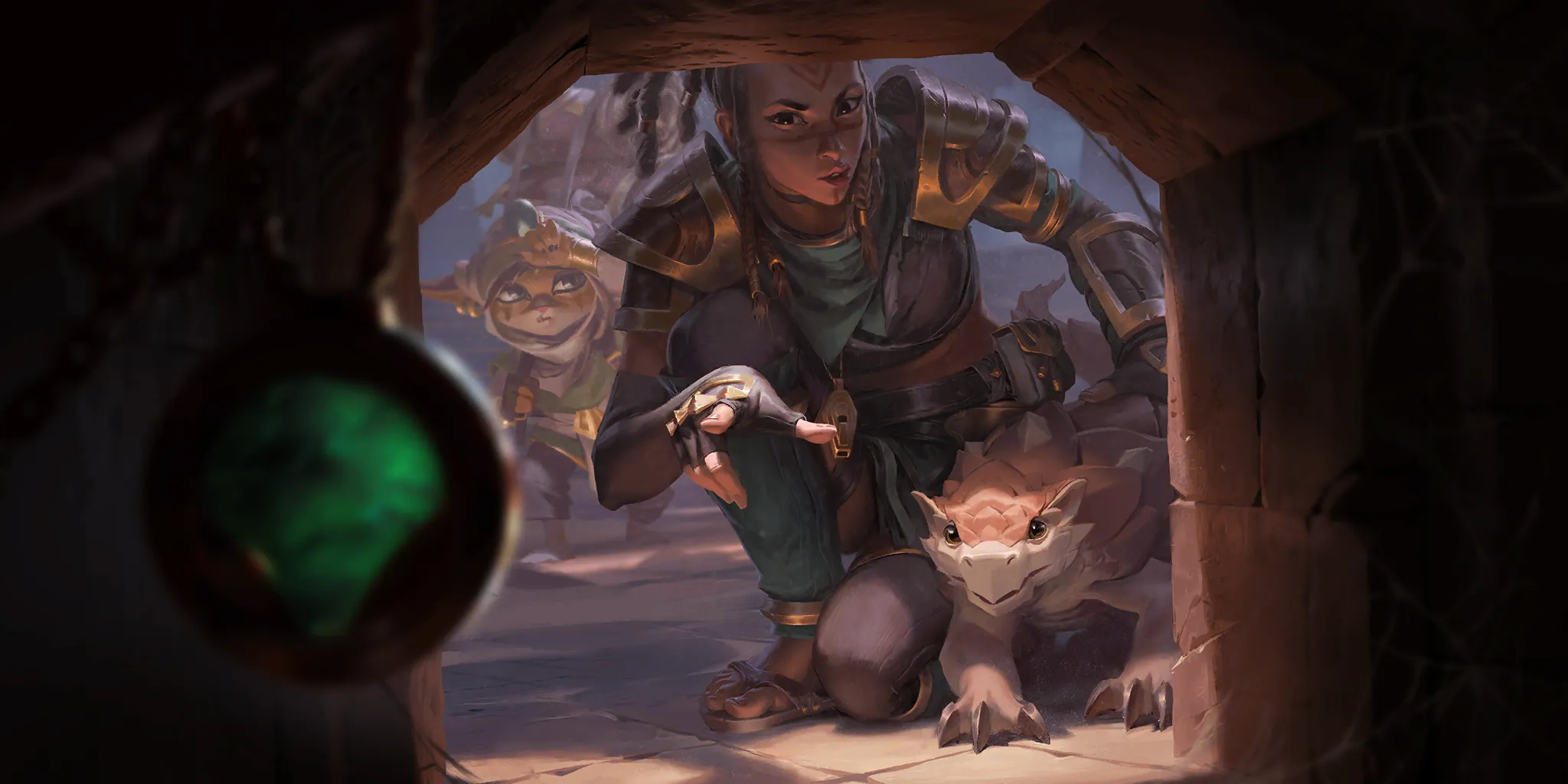

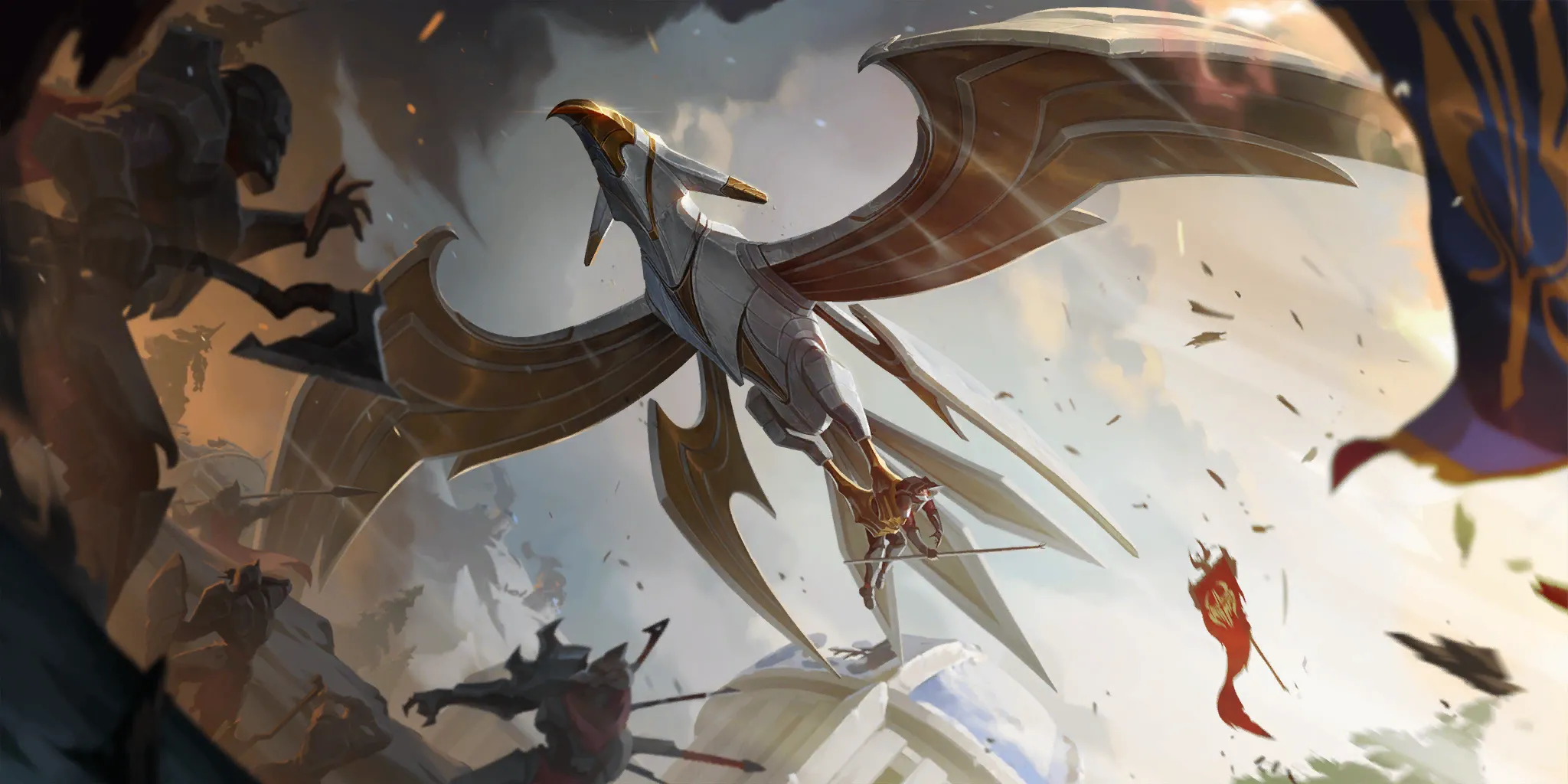
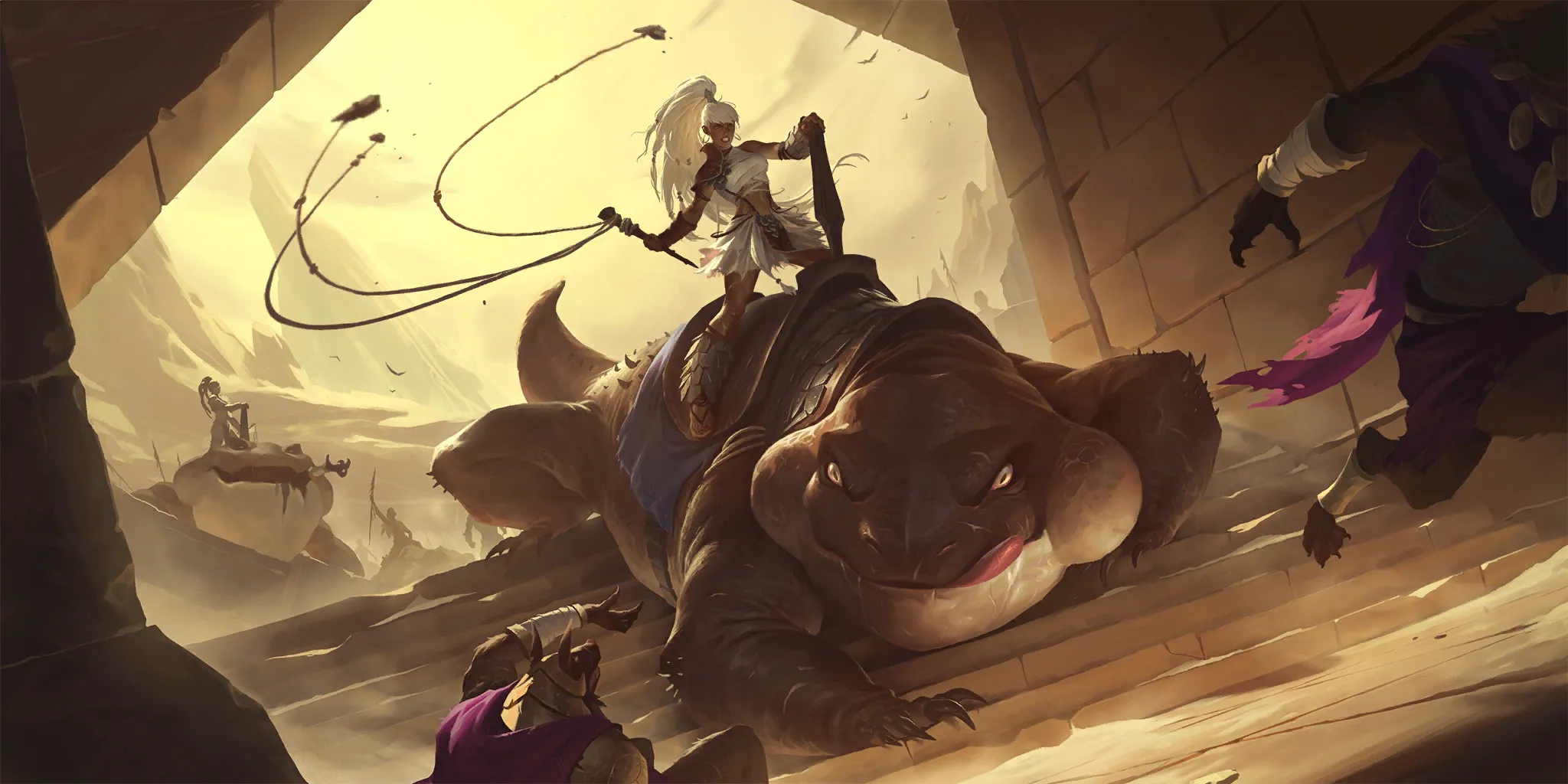
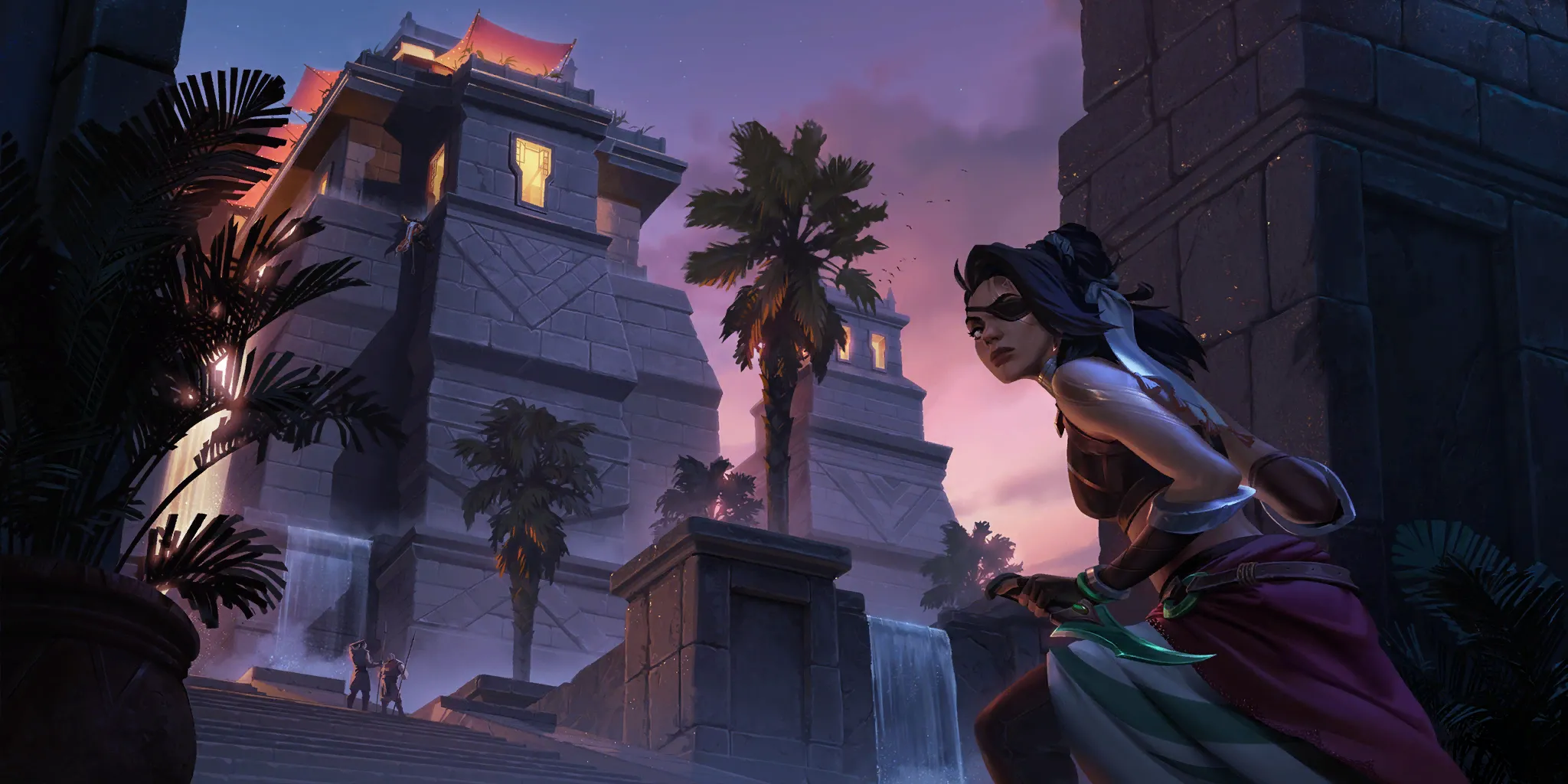

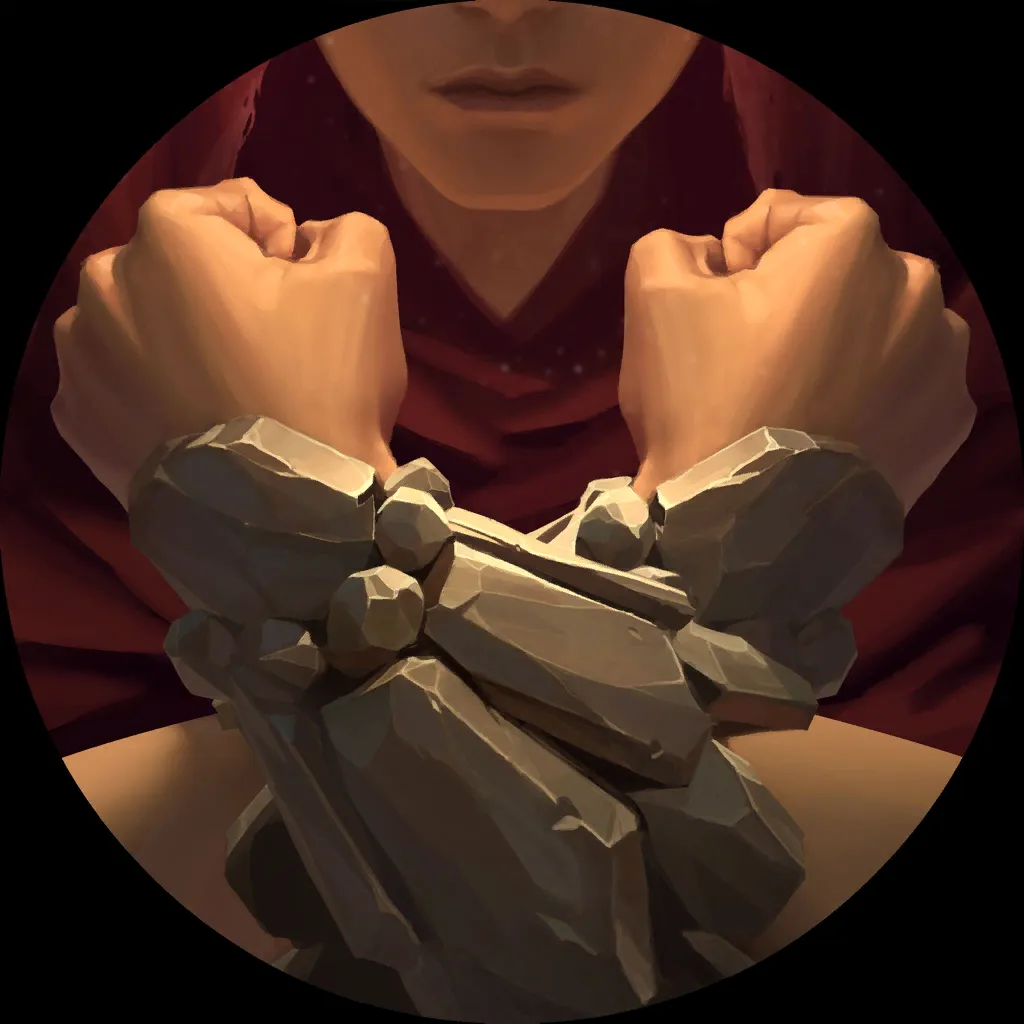
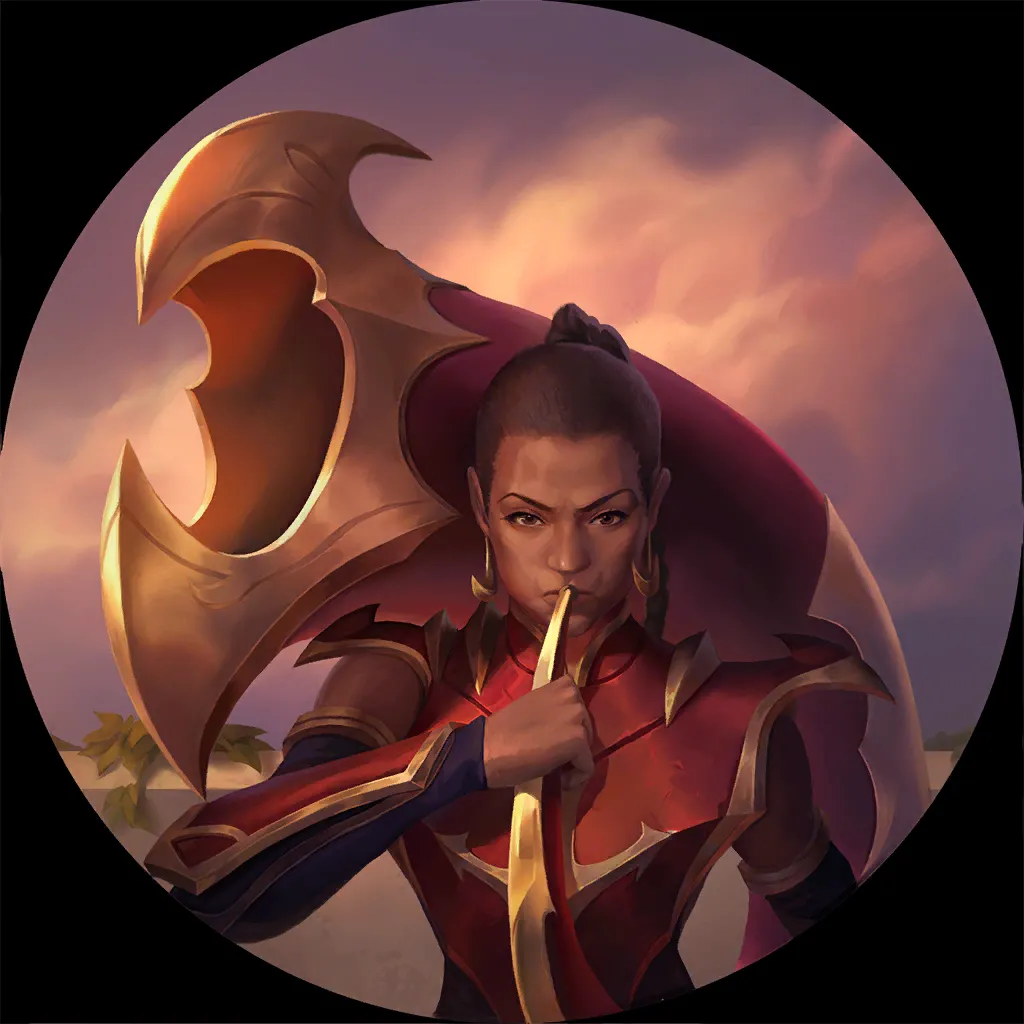
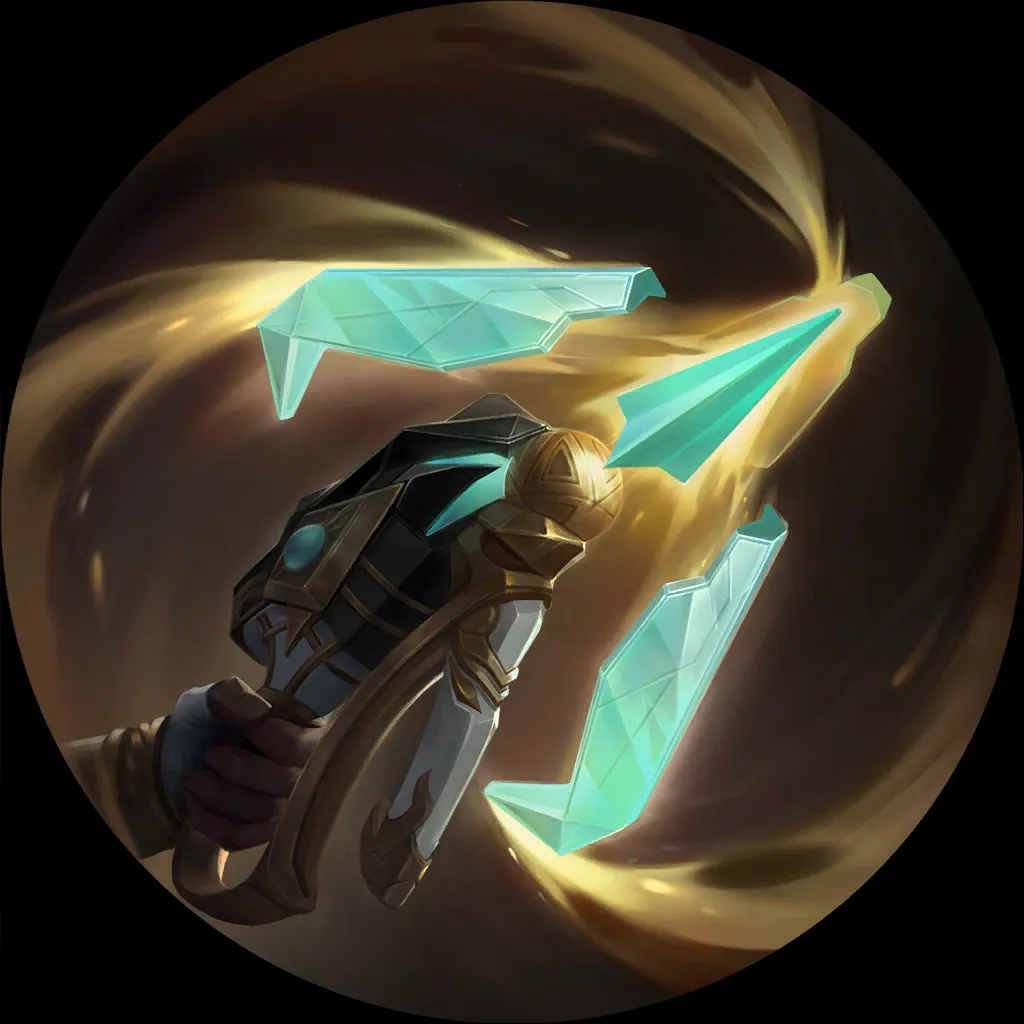
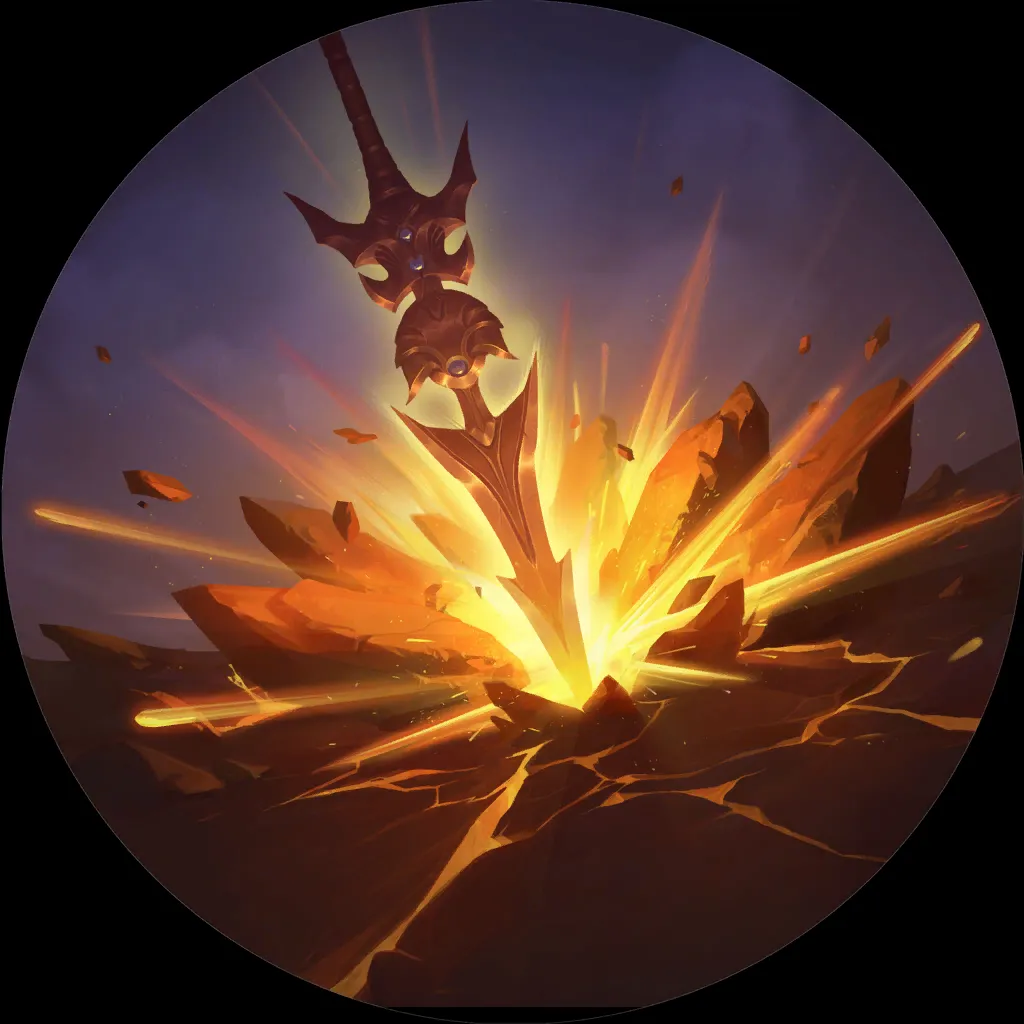
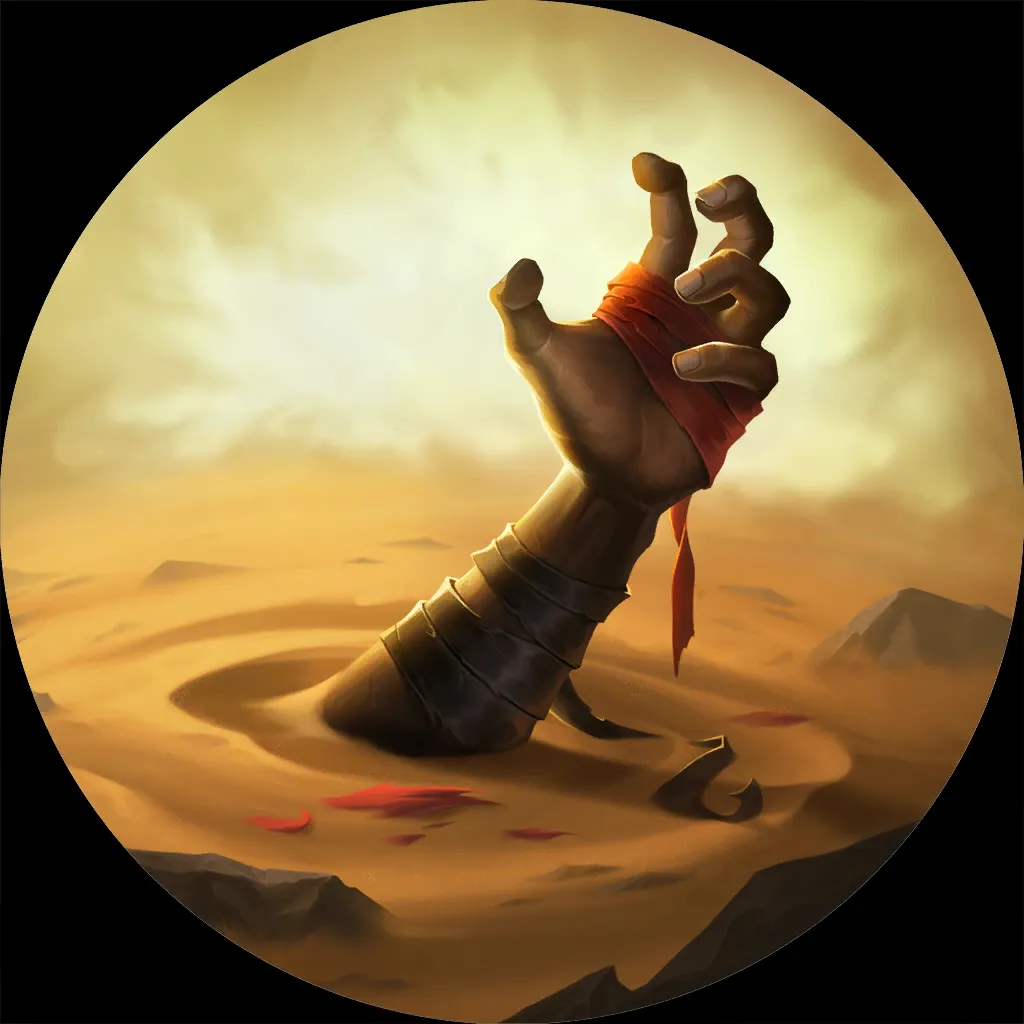
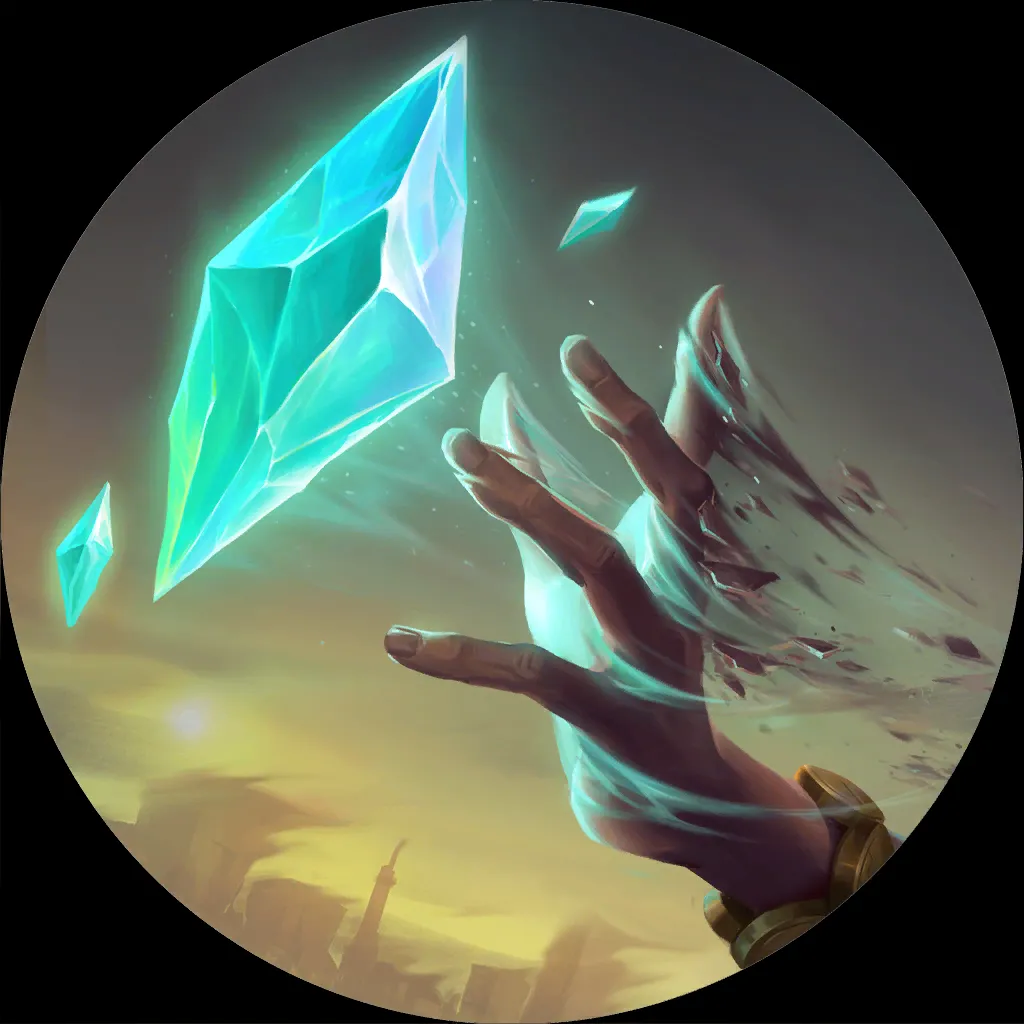
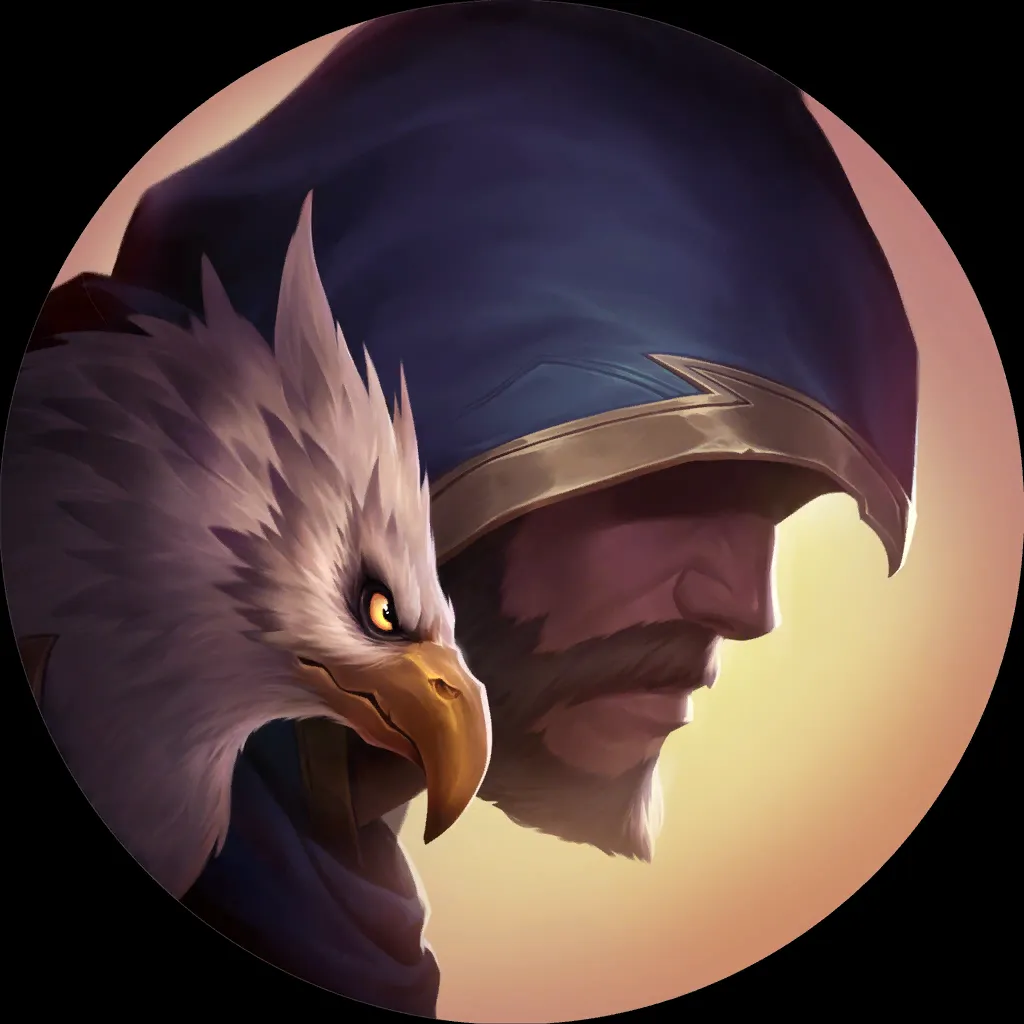
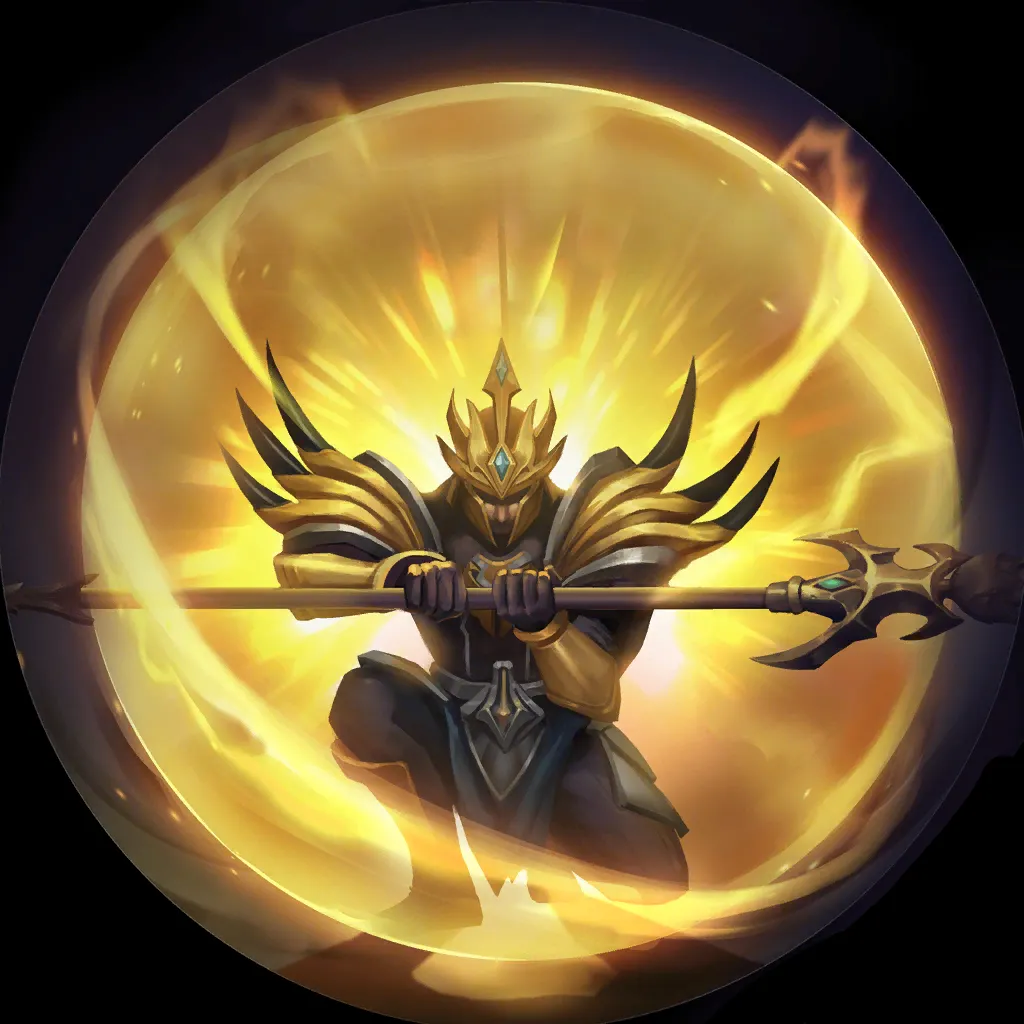
AJTehPro's Rank #1 Build
This version was used by AJTehPro to hit Rank #1 on the AM ladder this season. This version leans heavier into the powerful equipment package and is a bit more proactive than the version I prefer.

15 cards

25 cards




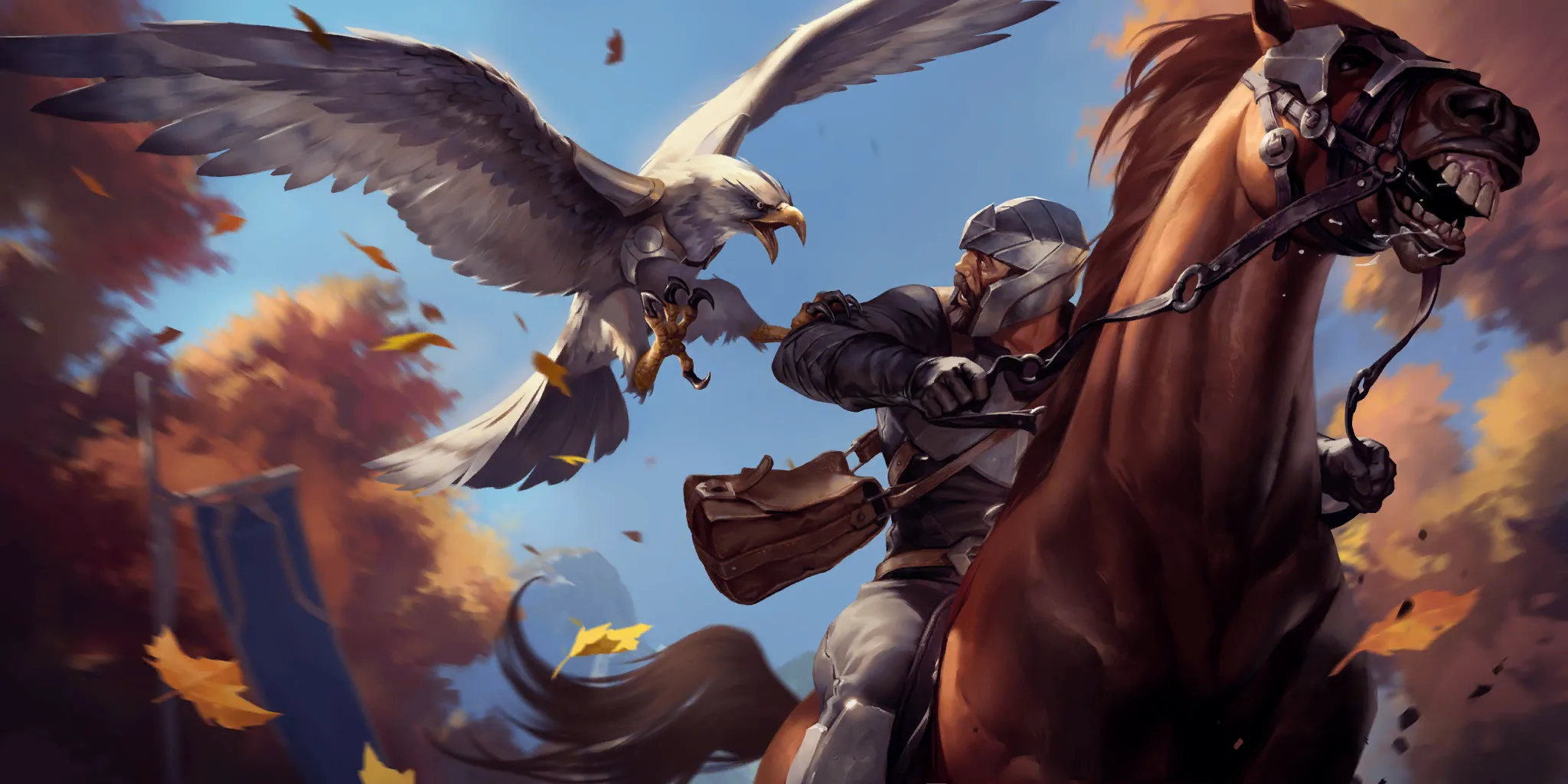





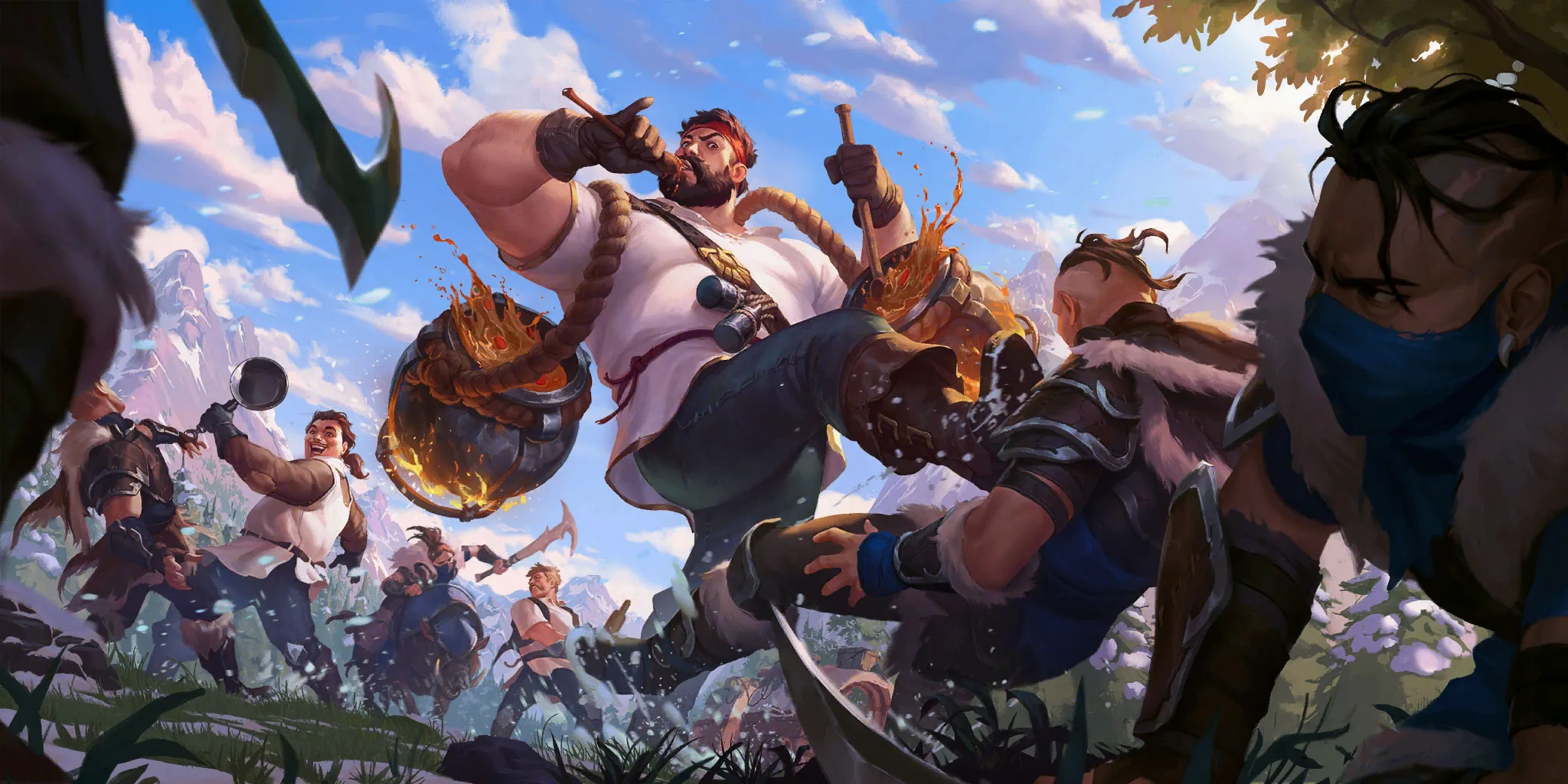


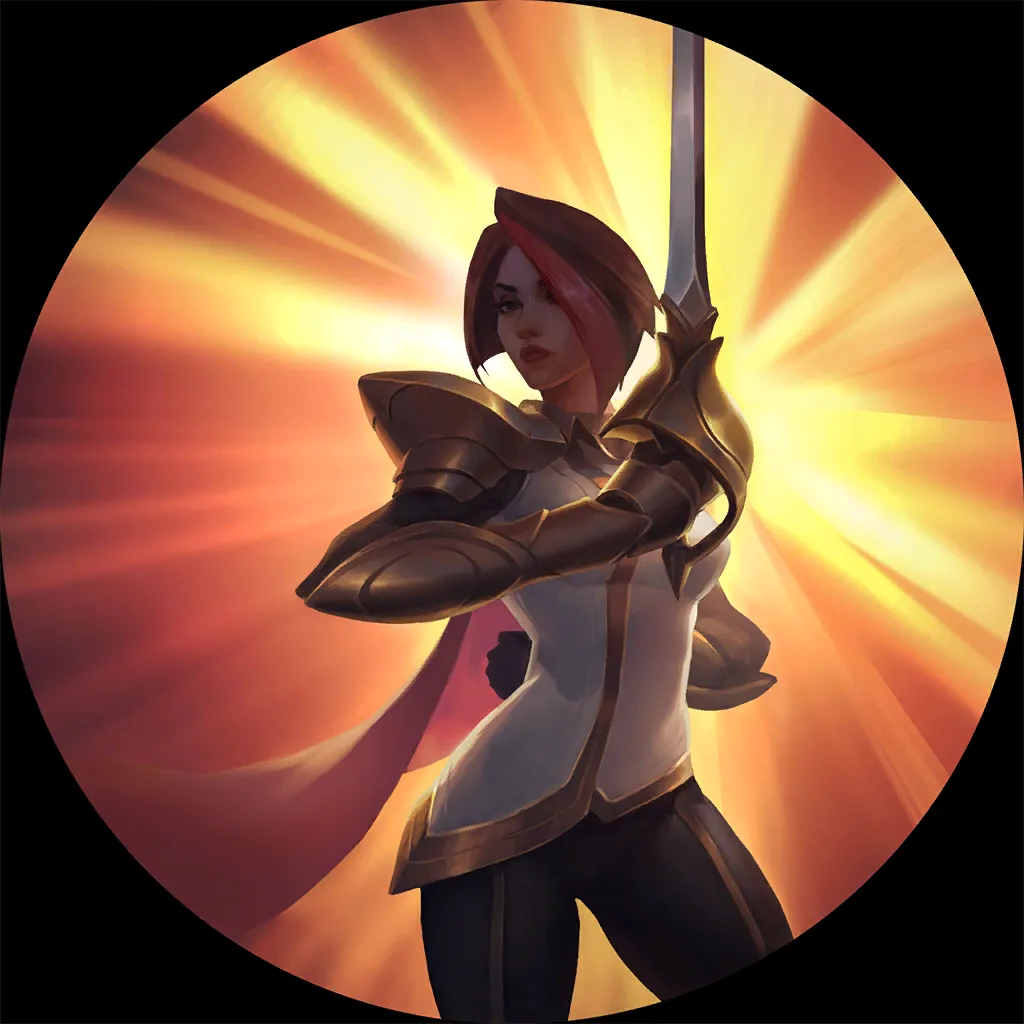

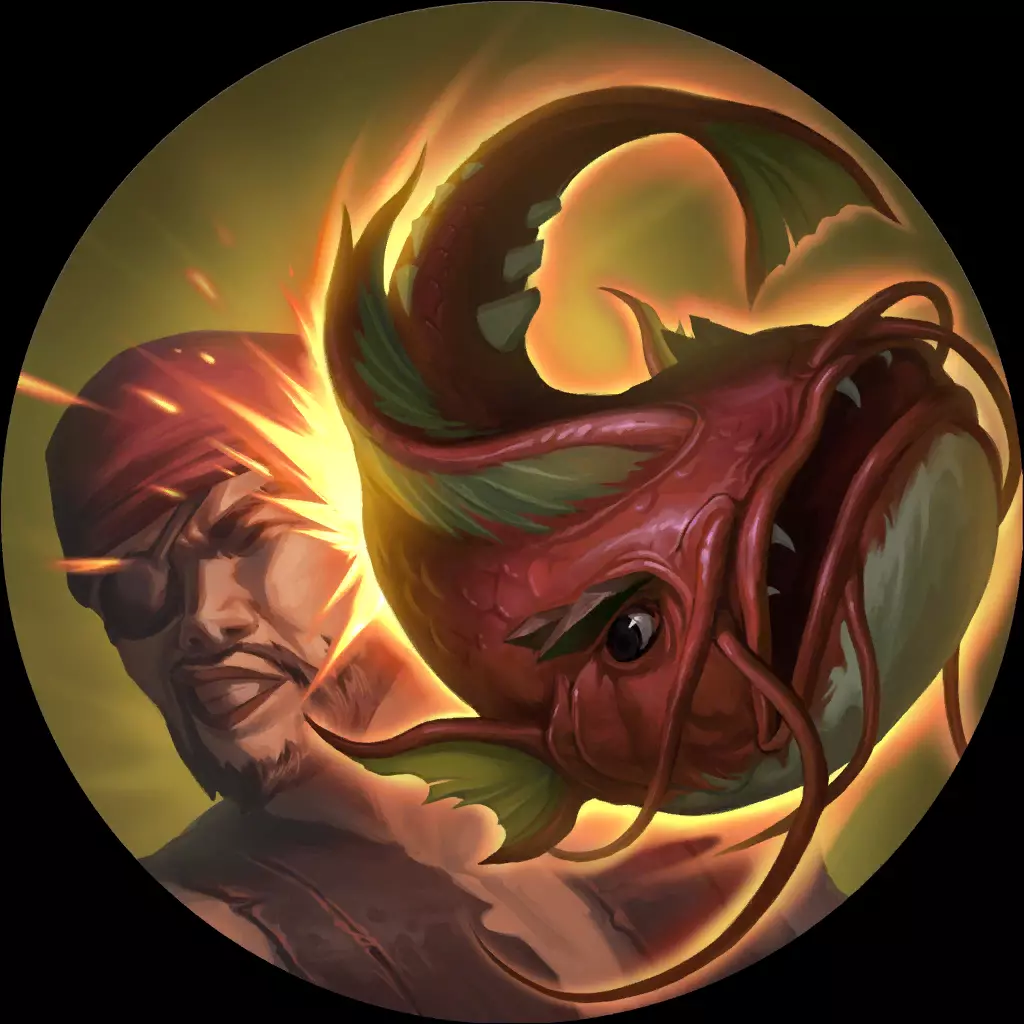

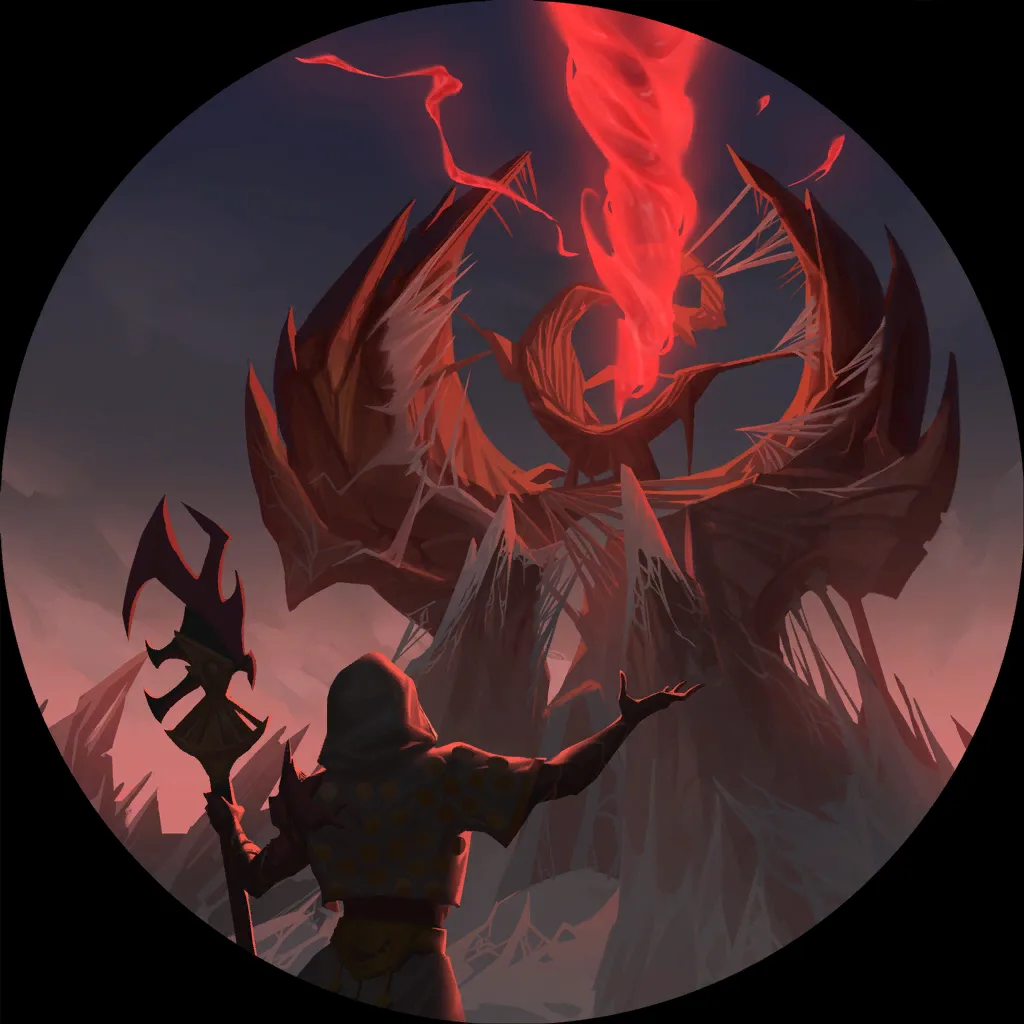
Card Breakdown



Sivir is a great card: a 5/3 body, Quick Attack, and SpellShield for four mana. She's an extremely difficult to remove unit through blocks or spells – most decks won’t be able to efficiently answer her without a Challenger or Vulnerable effect.
is a great card: a 5/3 body, Quick Attack, and SpellShield for four mana. She's an extremely difficult to remove unit through blocks or spells – most decks won’t be able to efficiently answer her without a Challenger or Vulnerable effect.
Nearly every time Sivir attacks, she will either remove a small chump-blocker that would have otherwise blocked one of your non-evasive units, or she'll push a very significant amount of Nexus damage that adds up quickly.
And, when attacking, Sivir (level 2) will grant her keywords to all other attacking units – an extremely powerful effect. Giving your entire team Quick Attack makes it nearly impossible for the opponent to maintain a board against you, and if Sivir still has SpellShield when attacking then it’s even harder for the opponent to interact.
will grant her keywords to all other attacking units – an extremely powerful effect. Giving your entire team Quick Attack makes it nearly impossible for the opponent to maintain a board against you, and if Sivir still has SpellShield when attacking then it’s even harder for the opponent to interact.
Sivir's Ricochet is a spell that won’t often be cast, but has some very powerful niche-use cases. To understand when Ricochet can be good, consider that Ricochet can’t overkill units: if the opponent has only a Petricite Broadwing
is a spell that won’t often be cast, but has some very powerful niche-use cases. To understand when Ricochet can be good, consider that Ricochet can’t overkill units: if the opponent has only a Petricite Broadwing on the board and I cast Ricochet, it will deal at least two damage to the enemy Nexus because it can only deal up to three damage to the Broadwing (enough to kill it). This can have good uses when going for lethal in some situations, or against wide boards of low-Health units.
on the board and I cast Ricochet, it will deal at least two damage to the enemy Nexus because it can only deal up to three damage to the Broadwing (enough to kill it). This can have good uses when going for lethal in some situations, or against wide boards of low-Health units.





Akshan is the card that makes our deck work. Having access to the landmarks Akshan creates on summon, namely Warlord's Palace
is the card that makes our deck work. Having access to the landmarks Akshan creates on summon, namely Warlord's Palace and Warlord's Hoard
and Warlord's Hoard , allows us to play for gameplans most other Demacia decks aren’t able to pursue.
, allows us to play for gameplans most other Demacia decks aren’t able to pursue.
Akshan is also just a very strong unit. A 2/2 body with Quick Attack is a solid statline for two mana, when backed up with his on-summon value from the landmark.
is also just a very strong unit. A 2/2 body with Quick Attack is a solid statline for two mana, when backed up with his on-summon value from the landmark.
Grappling Hook is also a nice champion spell as it can be extra interaction in a pinch. It's much easier to activate nowadays as well due to the addition of equipment.
is also a nice champion spell as it can be extra interaction in a pinch. It's much easier to activate nowadays as well due to the addition of equipment.




Both landmarks have an eight-round Countdown, and they will also advance by one every time an ally is targeted. Additionally, when Akshan strikes he will Advance the countdown of his landmark by one, or if there isn’t a landmark in play he will create one instead.
The Relic of Power that is eventually generated from the Palace is at least two mana worth of raw value – not game-winning on its own, but with proper set up and timing Relic of Power
that is eventually generated from the Palace is at least two mana worth of raw value – not game-winning on its own, but with proper set up and timing Relic of Power can be a game-ending card.
can be a game-ending card.




The value created from Sentinel's Hoard is absurd, and often immeasurable from a mana perspective. Getting to fully countdown a Warlord's Hoard will usually give you all the tools you need to win.
Playing with the Landmarks and understanding how to fully utilize them is the most complex part of Sivir Akshan and will be discussed more in-depth later.
Akshan and will be discussed more in-depth later.


Our deck runs like a well-oiled machine thanks to our landmark – without it, we are forced to play in a much more linear way. Vekauran Vagabond is a reasonably stated unit that gives us greater landmark consistency.
is a reasonably stated unit that gives us greater landmark consistency.
Even if we already have a Palace in play, Vagabond is still solid because she will advance the countdown of a Palace by two on summon. This massively accelerates our ability to access a potentially game-ending Sentinel's Hoard .
.
In this meta, it's generally better to use Vagabond to advance a Palace to completion, as opposed to having a Palace and a Warlord's Hoard in play at the same time. Boardspace will get tight, and as a Demacia Shurima deck we want to be able to go wide.
in play at the same time. Boardspace will get tight, and as a Demacia Shurima deck we want to be able to go wide.

We want a reasonable number of one-drops to facilitate our flexible gameplan. They can chip in some early damage, especially so when equipped, or block depending on the matchup. It is important that our one-drops have a high upside, though, because we are being very picky.
Forsaken Baccai has such upside. The predict is very powerful for finding a missing card, or just ensuring we don’t brick. Additionally, if you predict a Darkin Equipment the Baccai will grow to a 3/2 (although bear in mind that the opponent will know that you have predicted an equipment, if your Baccai gets the +1/+1 buff).
has such upside. The predict is very powerful for finding a missing card, or just ensuring we don’t brick. Additionally, if you predict a Darkin Equipment the Baccai will grow to a 3/2 (although bear in mind that the opponent will know that you have predicted an equipment, if your Baccai gets the +1/+1 buff).


More one-drops with upside! Sandstone Charger plays well with Merciless Hunter
plays well with Merciless Hunter , is a good use of spell mana, can pass priority for cheap, and often translates to good damage getting through.
, is a good use of spell mana, can pass priority for cheap, and often translates to good damage getting through.
With Sivir and Sandstone Charger
and Sandstone Charger you are constantly putting the opponent in a position where it's either an awkward block or they take a quarter of their Nexus HP – constantly forcing our foe to ask themselves this question is a very powerful tool in our arsenal.
you are constantly putting the opponent in a position where it's either an awkward block or they take a quarter of their Nexus HP – constantly forcing our foe to ask themselves this question is a very powerful tool in our arsenal.

Can’t play a Demacia deck without Petricite Broadwing . Holds down the board well, often two-for-one-ing, or trading with a unit and then acting as a Flame Chompers!
. Holds down the board well, often two-for-one-ing, or trading with a unit and then acting as a Flame Chompers! . Broadwing has gotten even stronger this patch too with the addition of The Darkin Aegis
. Broadwing has gotten even stronger this patch too with the addition of The Darkin Aegis .
.

Brightsteel has fallen a bit from her three-Power days (she used to be a 3/2 follower), but it can still be an extremely powerful play in a Demacia deck: stopping an opponent's attack when they develop, allowing Sivir (level 2) to share Barrier while attacking, letting a Petricite Broadwing
to share Barrier while attacking, letting a Petricite Broadwing value-trade, and advancing Akshan
value-trade, and advancing Akshan ’s landmarks are some of the many uses Brightsteel can have.
’s landmarks are some of the many uses Brightsteel can have.

Merciless Hunter is a crucial piece of our plan, and if you are piloting this deck well, she's a unit your opponent should always be fearing that you have in hand.
is a crucial piece of our plan, and if you are piloting this deck well, she's a unit your opponent should always be fearing that you have in hand.
Merciless allows us to interact with key engines or blockers through controlling their blocks in combat – her granting Vulnerable can often make or break certain matchups, like against Pantheon . The threat of Merciless is extremely powerful as well: consider how you are restricting your opponent's plays if they respect your Merciless threat, which can be used to create forks later on. Sometimes it will be a small fork, to get an action or two ahead on development; sometimes it will be three or four rounds ahead, after repeatedly accruing small advantages from repeating this play pattern.
. The threat of Merciless is extremely powerful as well: consider how you are restricting your opponent's plays if they respect your Merciless threat, which can be used to create forks later on. Sometimes it will be a small fork, to get an action or two ahead on development; sometimes it will be three or four rounds ahead, after repeatedly accruing small advantages from repeating this play pattern.
It’s important to be able to recognize when the threat of Merciless is more powerful than the board control and chip damage it can provide.

Runner gets in there and pushes damage. 6/3, Overwhelm and SpellShield for five mana is often hard to deal with when backed up with combat tricks and the rest of our curve.
When attacking with Ruin Runner, you often want to have a combat trick ready in order to punish greedy blocks. Since Runner has SpellShield, the opponent will most likely want to remove it by blocking with a three-Power unit – even if you don’t have a combat trick in hand, it can be smart to represent it, as the threat of a combat trick will often give you better attacks.


The Darkin Bloodletters are a difficult card to use properly. It’s very easy to overplay towards the Darkinthralls or Xolaani
are a difficult card to use properly. It’s very easy to overplay towards the Darkinthralls or Xolaani , and lose sight of how taxing this is on units, a resource this deck isn’t overly plentiful with. Additionally, it can be hard to recognize when is a good time to give up priority to equip a unit, or even what unit to equip. The one mana spent can also be way more taxing than it seems.
, and lose sight of how taxing this is on units, a resource this deck isn’t overly plentiful with. Additionally, it can be hard to recognize when is a good time to give up priority to equip a unit, or even what unit to equip. The one mana spent can also be way more taxing than it seems.
Still, this card is amazing – it's like a Shuriman Lost Soul , and gaining access to this equipment made Sivir
, and gaining access to this equipment made Sivir Akshan
Akshan a relevant meta deck again. The +1/0 goes a long way on evasive units, and can also help smaller units take trades they otherwise wouldn’t have access to. Xolaani as a recurring threat, or going for a Darkinthrall beatdown line of play, helps facilitate the deck's flexible, proactive gameplan. This is even further supplemented by Equipment being a very cheap, recurring way to advance Akshan’s landmark. It’s just very important to think critically when using Equipment – every action and mana is valuable, and it can be very punishing to equip the wrong unit and not be able to get the equipment off.
a relevant meta deck again. The +1/0 goes a long way on evasive units, and can also help smaller units take trades they otherwise wouldn’t have access to. Xolaani as a recurring threat, or going for a Darkinthrall beatdown line of play, helps facilitate the deck's flexible, proactive gameplan. This is even further supplemented by Equipment being a very cheap, recurring way to advance Akshan’s landmark. It’s just very important to think critically when using Equipment – every action and mana is valuable, and it can be very punishing to equip the wrong unit and not be able to get the equipment off.


The Darkin Aegis is one of the best cards in the game right now. Tough is an insane keyword, and the +1/+1 can bring a lot of our units up to relevant power or defense break points.
is one of the best cards in the game right now. Tough is an insane keyword, and the +1/+1 can bring a lot of our units up to relevant power or defense break points.
I think Sivir Akshan is one of the best decks at abusing Joraal . The way in which we can apply pressure and threaten certain cards really allows Joraal’s attack effect to shine: forcing our foe to spend mana on their round to not fall behind, then developing Joraal so as to have a wide, open attack with a Rite of Negation
. The way in which we can apply pressure and threaten certain cards really allows Joraal’s attack effect to shine: forcing our foe to spend mana on their round to not fall behind, then developing Joraal so as to have a wide, open attack with a Rite of Negation or The Absolver
or The Absolver or Golden Aegis
or Golden Aegis backup is a back-breaking play.
backup is a back-breaking play.

Shaped Stone will usually be activated since we always want to be playing a Landmark early. A +1/1 buff for one mana isn’t awful, but when this is a one-mana, +2/1 buff is when this spell becomes very powerful.
will usually be activated since we always want to be playing a Landmark early. A +1/1 buff for one mana isn’t awful, but when this is a one-mana, +2/1 buff is when this spell becomes very powerful.
When we represent one mana, it’s extremely difficult for the opponent to get a favorable block on evasive units. Most decks either won’t be able to play around Shaped Stone, or will have to hold up more mana for their more expensive tricks, which is especially difficult for other decks to do efficiently at the moment (above all due to the lack of Sharpsight in the meta).
in the meta).

Blocking elusives can be relevant. Additionally, the health from +1/2 can be more useful than Shaped Stone ’s +2/1. This is especially true when playing with Ruin Runner
’s +2/1. This is especially true when playing with Ruin Runner , who at three Health can be a bit fragile.
, who at three Health can be a bit fragile.


The Absolver is a key finisher in our deck. The famous line is to slam an Absolver on Sivir (level 2) and have your entire board Overwhelm their way to victory. And even without Sivir having access to both sides of Absolver, we can often find wins if meaningful chip damage was pushed earlier. This is especially true if the Absolver round is the same round when the Warlord's Hoard
and have your entire board Overwhelm their way to victory. And even without Sivir having access to both sides of Absolver, we can often find wins if meaningful chip damage was pushed earlier. This is especially true if the Absolver round is the same round when the Warlord's Hoard finishes counting down.
finishes counting down.
Also note that if you use The Absolver to finish the Countdown of Warlord's Palace and level up Akshan
and level up Akshan , The Absolver's Return is created in hand.
, The Absolver's Return is created in hand.
You usually don’t want to use The Absolver unless you get value out of both sides of the spell, and with some hands you will want to slow down the game to make sure you activate The Absolver. Sometimes it is correct to just use the first half if you need the stats, but it’s best to try and avoid these situations; you won’t always have that luxury, however, and will have to think critically on whether the immediate value now, versus gaining access to The Absolver's Return later, is better.

Cataclysm provides interaction that allows us to take advantage of the powerful evasive keywords most of our units have. Also great for lots of cheeky lethals with Overwhelm units.
provides interaction that allows us to take advantage of the powerful evasive keywords most of our units have. Also great for lots of cheeky lethals with Overwhelm units.

Quicksand is a great one-of to keep the opponent honest, and handle keywords that can be very awkward to deal with efficiently, like Barrier or Formidable. I’m currently running two for the Zed Vayne match up, but with the popularity of that deck heavily declining a single Quicksand could be a good cut.
is a great one-of to keep the opponent honest, and handle keywords that can be very awkward to deal with efficiently, like Barrier or Formidable. I’m currently running two for the Zed Vayne match up, but with the popularity of that deck heavily declining a single Quicksand could be a good cut.

Rally is a crucial piece of our gameplan. It gives us another way to go over the top if we can’t find Overwhelm and keep getting blocked down. It’s also a key card for allowing us to take passes without attacking if we create a good mana advantage – rallying is a great way to pressure mana that we made an opponent burn on an earlier round.
Additionally, putting a Barrier from Aegis on Sivir is a messed-up development punishment.
is a messed-up development punishment.

Rite of Negation is an extremely powerful effect and a valid inclusion in most proactive Shurima strategies. Rite’s particular effect of removing the whole stack (as opposed to just countering a single spell) can be especially effective when combined with SpellShields or multiple lethal threats. It’s also especially effective against Seraphine .
.

Concerted Strike will remove most units currently in the meta. It can also be used to quickly flip either champion. Be aware that both units need to strike off of Concerted to get progress for Sivir ’s level up; whereas, for Akshan
’s level up; whereas, for Akshan , even if the targeted unit dies before Akshan strikes it, the landmark will advance.
, even if the targeted unit dies before Akshan strikes it, the landmark will advance.
Tech Cards

The bird is the next best one-drop to run in this list. It’s also especially effective against bigger board-based decks, like Pantheon .
.

Combat Cook ’s Forged equipment is very nice, and he is a respectable unit on curve. My issue with the Cook is that there are other ways we would generally prefer spending our mana in these rounds, and we already have enough strong Equipment and mid-game units.
’s Forged equipment is very nice, and he is a respectable unit on curve. My issue with the Cook is that there are other ways we would generally prefer spending our mana in these rounds, and we already have enough strong Equipment and mid-game units.
I used to play one Combat Cook last season, but I cut him for the Darkin Aegis.




These can all be reasonably included to replace Ruin Runner in different metas. The dragons fight for board well, Bruiser plays for the landmarks very well, and Radiant can be a good counter against aggressive strategies.
in different metas. The dragons fight for board well, Bruiser plays for the landmarks very well, and Radiant can be a good counter against aggressive strategies.


Single Combat and Cataclysm
and Cataclysm are often interchangeable depending on the meta. I really like Cataclysm, so I will usually play two Cataclysms or one Cata and one Single.
are often interchangeable depending on the meta. I really like Cataclysm, so I will usually play two Cataclysms or one Cata and one Single.
Fish Fight is a very powerful card, but the list I’m playing doesn’t include enough equipment to facilitate Fish Fight well. The card looks much better in AJ’s list than mine, as a Concerted Strike
is a very powerful card, but the list I’m playing doesn’t include enough equipment to facilitate Fish Fight well. The card looks much better in AJ’s list than mine, as a Concerted Strike replacement.
replacement.
Sivir Akshan Demacia – General Gameplan
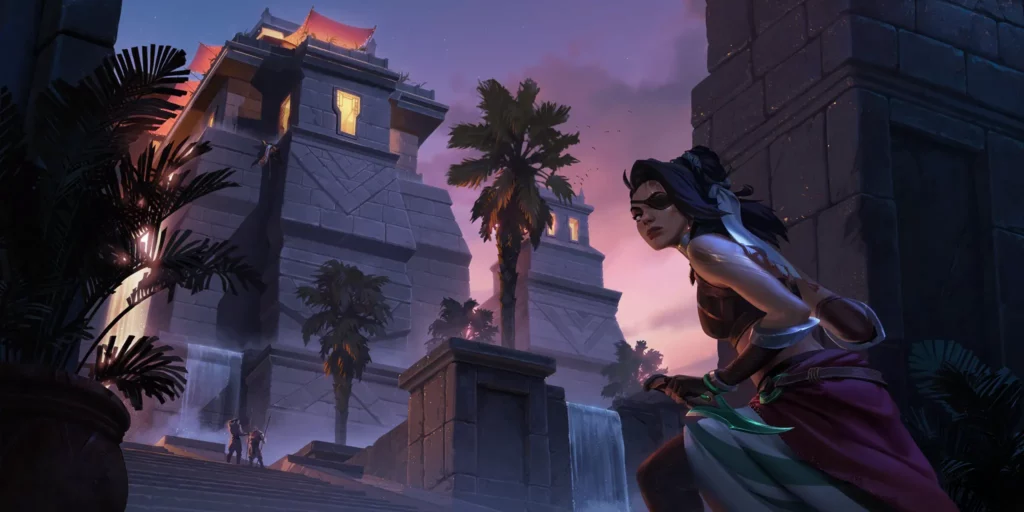
Before even start talking about what I’m trying to do in a game as Sivir Akshan
Akshan , I would recommend readers to make sure they are familiar with the first three parts of Yangzera’s articles’ on fundamentals, as well as, of course, “Who’s the Beatdown?”
, I would recommend readers to make sure they are familiar with the first three parts of Yangzera’s articles’ on fundamentals, as well as, of course, “Who’s the Beatdown?”
Now that we are on the same page, the only general gameplan I have is to set the enemies Nexus to zero. Sivir Akshan is a Midrange Tempo deck with a Combo finisher, which is essentially card game lingo for “This deck does whatever it wants to do”.
There are a lot of different avenues of play to go down with this deck. The best way to determine which path to take is by evaluating your opponent's game plan and your handstate. There are a lot more lines than you would initially expect, and they can be very tricky to navigate. Be critical of what seems like a simple play and keep an open mind to all possibilities – there are some insane lines to be pulled off if you plan a few rounds ahead and understand how the pieces of your deck can come together.
Defining the Opponent’s Gameplan
Through understanding how the opponent is trying to win, we can properly identify our own role in the game. Whether we are the Beatdown or if we are the Control deck will have the greatest influence on how we want to play the game out.
As the Control deck, it is our job to stabilize against the opposing gameplan; this allows the innate higher value of our deck to eventually secure a win if we can withstand the early aggression. Taking a more indepth look at how the opponent plans to apply pressure will allow you to better understand how to craft your response.
For example, against Annie Jhin and Vayne Rumble you are the control deck; however, the way you will mulligan and try to play out these games will be quite different. Against Annie Jhin, you just want early units to trade down and keep your Nexus' Health high – therefore, keeping a card like Merciless Hunter is often just way too slow. Against Vayne Rumble, on the other hand, Merciless is one of the best cards as it gives an effective way to interact with Rumble's SpellShield.
is often just way too slow. Against Vayne Rumble, on the other hand, Merciless is one of the best cards as it gives an effective way to interact with Rumble's SpellShield.
As the Beatdown, you need to aggress and eventually get underneath the opponent. The Shurima and Demacia midrange package is quite good at going under when against slower strategies – Sivir , Akshan
, Akshan , Ruin Runner
, Ruin Runner , Treasure Seeker
, Treasure Seeker , and Golden Aegis
, and Golden Aegis are extremely effective for this. Usually the goal in these matchups is to keep the pressure very high with our well-stated units and Evasive threats.
are extremely effective for this. Usually the goal in these matchups is to keep the pressure very high with our well-stated units and Evasive threats.
This won’t happen in every game in which you are the aggressor, though: Sivir Akshan provides a lot of value and can grind games out even when it is the Beatdown. By taking advantage of Akshan’s landmarks, how difficult SpellShield units can be to answer, and how cheap most of the deck is, you are able to play slower, more attrition-based games even as the aggressor.
It is important to recognize when this is the case from the position of being the Beatdown. It will be very difficult to construct a higher value hand than your opponent, even if you play multiple Sentinel's Hoard s – therefore, when pursuing this gameplan, you are planning to set up a higher value round, or series of two-three rounds, where you plan to have an extremely high threat density in order to constrict the mana your opponent can spend on answers to said threats.
s – therefore, when pursuing this gameplan, you are planning to set up a higher value round, or series of two-three rounds, where you plan to have an extremely high threat density in order to constrict the mana your opponent can spend on answers to said threats.
Much like when we are the control deck, the way we agress will differ depending on the matchup. The way you play as the aggressor against Pantheon is quite different from the way you play against Seraphine
is quite different from the way you play against Seraphine . Against Pantheon
. Against Pantheon we are basically never allowed to play for attrition and take some slower turns. When against Seraphine, on the other hand, playing a slower attrition-based game will be reasonable with certain hands.
we are basically never allowed to play for attrition and take some slower turns. When against Seraphine, on the other hand, playing a slower attrition-based game will be reasonable with certain hands.
Recognizing Your Handstate
There are a lot of ways to end the game for a Sivir Akshan deck. Taxing your opponent’s board with well-stated, evasive units until you beat them down; Rally; The Absolver ; Rally and The Absolver; level-two Champion Grind; one-drop and Sandstone Charger
; Rally and The Absolver; level-two Champion Grind; one-drop and Sandstone Charger beatdown; Darkin weapon grind; just good ol' fashion tempo… and the list goes on.
beatdown; Darkin weapon grind; just good ol' fashion tempo… and the list goes on.
Point being, Sivir Akshan has a lot of different ways to get to the end of the game. It’s important to think about how much mana is available to you and the opponent this round and future rounds, the cards in hand and on board for both players, and what both of the players want the coming rounds to look like. This is a very complex puzzle to solve, but with an open mind and critical thinking it's a skill that can be learned.
Solving this puzzle becomes even more consistent when you can start playing around potential draws and start reading the opponent’s hand.
Flexibility and the Economies of LoR
If you have read through Yang’s articles on strategy fundamentals you may have noticed that Sivir Akshan is a deck that is more than capable at playing along, and sometimes even exploiting, the fundamental concepts discussed. Being able to attack other decks, and in turn fight back against other decks in these fundamental ways, makes Sivir Akshan a very strong and flexible deck. Most decks have some fundamental strategic flaw that can be exploited, and if that flaw exists then Sivir Akshan has multiple draws that will punish it.
Card games are fundamentally games of resources. Attack tokens, actions (like summoning a Sandstone Charger at Focus speed), unit mana versus spell mana, cards in hand, and cards on board are all different resources worth various amounts of value. The comparison is often hard to make as the resources don’t transfer one for one, but these are all just different resources that have a certain value.
at Focus speed), unit mana versus spell mana, cards in hand, and cards on board are all different resources worth various amounts of value. The comparison is often hard to make as the resources don’t transfer one for one, but these are all just different resources that have a certain value.
Generally speaking, the player who gets the most value will win the game. That's one of the reasons why aggro decks feel so powerful and efficient when they win (they play nearly every card in hand), but seem so weak when they lose (they run out of cards to play). When the aggro deck wins they get max value out of their hand because the game ended before the negative consequences occurred, and they got more value out of their hand than the opponent did, whereas when the aggro deck loses, they have generally run out of cards to play that are meaningful.
Both cases are similar: one player played significantly less value in cards. The difference is the bottleneck. When the aggro player wins, it is because they attacked their opponent's mana: the opponent couldn’t play all of their cards because they never had enough mana. When the aggro player loses, it’s because their cards in hand were attacked: the aggro player used nearly all of their resources but didn’t win, which means that they will have even less value coming in the following rounds and the game is in a losing state.
These are just different economies to play the game and attack the opponent through, and Sivir Akshan decks are very good at attacking whichever of the opponent’s economies is their weakest. They are also very good at transferring advantages from one or more economies to another, to create punishing plays.
A great example of this is repeatedly bluffing Merciless Hunter to develop aggressively on your attacking round, and then passing to trade positively in mana while preventing the opponent from advancing their game plan through the development of a key unit. If you do this once or twice, you should be able to create enough of a board and mana advantage to then end the game with a well-timed Golden Aegis
to develop aggressively on your attacking round, and then passing to trade positively in mana while preventing the opponent from advancing their game plan through the development of a key unit. If you do this once or twice, you should be able to create enough of a board and mana advantage to then end the game with a well-timed Golden Aegis .
.
Tips, Tricks, and Other Intricacies
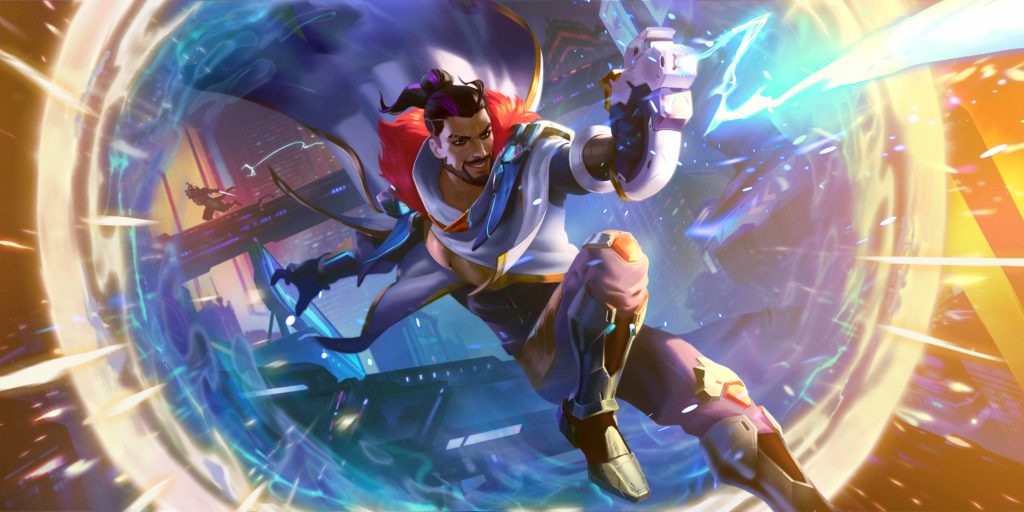
Represent Cards
One of the biggest mistakes I see Sivir Akshan
Akshan players make is consistently tapping out and just playing as a Demacia on-curve deck. Decks are stronger when you bluff, and this deck in particular. It’s very hard to play around all of our potential options, and that often results in the opponent playing into some of them. We have lots of powerful cards to represent, and also plenty of ways to use spell mana well. Not only are we playing more spells than most Demacia decks, but Equipment is also a great way to use spell mana.
players make is consistently tapping out and just playing as a Demacia on-curve deck. Decks are stronger when you bluff, and this deck in particular. It’s very hard to play around all of our potential options, and that often results in the opponent playing into some of them. We have lots of powerful cards to represent, and also plenty of ways to use spell mana well. Not only are we playing more spells than most Demacia decks, but Equipment is also a great way to use spell mana.
I’m also very happy to burn mana with this deck, if I have a landmark in play and my opponent is also burning mana. If there is a landmark counting down to guarantee we will have a way to create a high-tempo round, or keep up in value, we can play a slower game. Additionally, we have very efficient cards, so as long as we aren’t going down in mana, we can play a slower game and try to set up a fork later on with a Golden Aegis or Rite of Negation
or Rite of Negation backup.
backup.
Make sure to stay consistent with your bluffs as well. If you bluffed Merciless Hunter on round four, you probably want to bluff it on round six as well.
on round four, you probably want to bluff it on round six as well.
Playing With the Landmark
Understanding how to play around the Akshan landmark, and use the landmark to control the pace of the game, are the skills that define a strong Akshan Sivir player.
landmark, and use the landmark to control the pace of the game, are the skills that define a strong Akshan Sivir player.
When you have Akshan and a Warlord's Palace
and a Warlord's Palace , or just a Warlord's Hoard
, or just a Warlord's Hoard in play, you generally have control over the game. Having access, or threatening to have access to, the Hoard is extremely powerful. The amount of value generated from a Sentinel's Hoard
in play, you generally have control over the game. Having access, or threatening to have access to, the Hoard is extremely powerful. The amount of value generated from a Sentinel's Hoard is very difficult for any deck to keep up with.
is very difficult for any deck to keep up with.
If you have this board state, try to take advantage of the lead you should have. Instead of going for high-risk plays, you can play for incremental amounts of advantage – when the Hoard pops, you will have all the guaranteed advantage you need.
Constantly monitor your landmarks' progress. The Relic of Power and Sentinel's Hoard can swing the tides of the game if accessed at the correct moment. You should use spells and facilitate scenarios to help the landmarks finish counting down at the proper time.
and Sentinel's Hoard can swing the tides of the game if accessed at the correct moment. You should use spells and facilitate scenarios to help the landmarks finish counting down at the proper time.
For example, using a Concerted Strike on a Back Alley Barkeep
on a Back Alley Barkeep to remove a blocker and advance the landmark to set up a strong open attack – sometimes I’ll even block with Akshan to get one extra tick on the landmark, although usually only to advance a Warlord's Hoard.
to remove a blocker and advance the landmark to set up a strong open attack – sometimes I’ll even block with Akshan to get one extra tick on the landmark, although usually only to advance a Warlord's Hoard.
It’s important to be aware of Equipment cycling. In the late game, when you have multiple equipment and excess mana, you can keep replaying Equipment on the same unit for landmark advance. Turboing out a Hoard like this can be extremely powerful.
Now that you know how to play with the landmarks we need to know…
What to Choose From Warlord's Palace
When I talk to people about what I pick off of the Palace, my answer is, “About half the time I draw, about 45% of the time I take Sandstone Charger , and sometimes I’m based enough to go for the +1/0 buff.”
, and sometimes I’m based enough to go for the +1/0 buff.”
This is a rough guess and a half joke, but I say this to bring up an important point: most people default to draw with their Relic of Power way too often. Getting the predicted draw will always be solid value, and often will be the only way to get actual value from the Relic – however, there are many spots where this is much less impactful than a Charger or +1/0. And I guarantee that you aren’t choosing Sandstone Charger
way too often. Getting the predicted draw will always be solid value, and often will be the only way to get actual value from the Relic – however, there are many spots where this is much less impactful than a Charger or +1/0. And I guarantee that you aren’t choosing Sandstone Charger enough.
enough.
Charger has won me so many games off of the Palace that I’ve affectionately referred to Sivir Akshan as a Sandstone Charger deck at points.
The Sandstone Charger is already a powerful card, allowing another non-ephemeral unit to get through uncontested (while a blocker stops the Charger), or pushing five damage. This becomes much more powerful when the Sandstone Charger can be summoned at Focus speed, cheating an action and going an extra unit wide.
is already a powerful card, allowing another non-ephemeral unit to get through uncontested (while a blocker stops the Charger), or pushing five damage. This becomes much more powerful when the Sandstone Charger can be summoned at Focus speed, cheating an action and going an extra unit wide.
And even the +1/0 option off of Palance can be correct sometimes. Generally it’s to get units to reach important breakpoints, flip Sivir earlier, or to push damage with a full board that is much wider than the opponent’s.
What to Choose From Warlord's Hoard
When getting to play Sentinel's Hoard , I think most Sivir Akshan players cast Fount of Power
, I think most Sivir Akshan players cast Fount of Power too much. It’s very easy to draw off of both landmarks because, well, drawing cards is generally pretty good and makes my brain release the happy chemicals. I’m pretty confident that this option is usually bait, though, and I think it is the option I've chosen the least of this season.
too much. It’s very easy to draw off of both landmarks because, well, drawing cards is generally pretty good and makes my brain release the happy chemicals. I’m pretty confident that this option is usually bait, though, and I think it is the option I've chosen the least of this season.
The Absolver's Resurrection is the form I’ve cast the most this season. Being able to revive the strongest dead ally for zero mana, and grant Vulnerable to all opposing units is often a game-winning play (especially if it’s a Ruin Runner
is the form I’ve cast the most this season. Being able to revive the strongest dead ally for zero mana, and grant Vulnerable to all opposing units is often a game-winning play (especially if it’s a Ruin Runner ). The Vulnerable grant and gaining access to an extra copy of a win condition is absurdly powerful, and it honestly feels like a lot of players are just auto-piloting when they don’t pick this option.
). The Vulnerable grant and gaining access to an extra copy of a win condition is absurdly powerful, and it honestly feels like a lot of players are just auto-piloting when they don’t pick this option.
A few things to note about Resurrection:
- It will revive a level-two Sivir
 over a Ruin Runner
over a Ruin Runner (although Sivir has to have been in play and leveled up to be resurrected over Ruin Runner).
(although Sivir has to have been in play and leveled up to be resurrected over Ruin Runner). - If Xolaani
 is the strongest unit that died, a zero-mana The Darkin Bloodletters
is the strongest unit that died, a zero-mana The Darkin Bloodletters will be created in hand, and Xolaani can be cast for five mana.
will be created in hand, and Xolaani can be cast for five mana. - If Sivir, Ruin Runner, and Xolaani haven’t died yet, you are most likely getting a Sandstone Charger
 .
.
Shield of the Sentinels is very good when going for a The Absolver
is very good when going for a The Absolver lethal with Champions, especially Sivir. A common play pattern against Sivir is to remove her SpellShield and leave her on board until the Absolver goes on her – if you use Absolver to trigger the Hoard and then put the SpellShield back on with Shield of the Sentinels
lethal with Champions, especially Sivir. A common play pattern against Sivir is to remove her SpellShield and leave her on board until the Absolver goes on her – if you use Absolver to trigger the Hoard and then put the SpellShield back on with Shield of the Sentinels , you can often get around this play pattern. This is especially effective when backed up with Rite of Negation
, you can often get around this play pattern. This is especially effective when backed up with Rite of Negation .
.
Drawing and discounting is obviously very good, and can allow for some insanely explosive rounds with a three-mana Golden Aegis and one-mana Absolver; however, really think about your hand and the gamestate. What option is really the best?
and one-mana Absolver; however, really think about your hand and the gamestate. What option is really the best?
Tracking Sivir Level Progress and Attack Ordering
Level Progress and Attack Ordering
Sivir (level 2) is extremely powerful and it’s important to recognize when having a level-two Sivir is a win condition. Sivir with The Absolver
is extremely powerful and it’s important to recognize when having a level-two Sivir is a win condition. Sivir with The Absolver will often end the game in one attack as long she has a board to buff; and, even without The Absolver, Sivir will grind down the opponent if she has a board to share Quick Attack with. Some games it’s worth it to (slightly) suboptimally spend strike spells and Sandstone Charger
will often end the game in one attack as long she has a board to buff; and, even without The Absolver, Sivir will grind down the opponent if she has a board to share Quick Attack with. Some games it’s worth it to (slightly) suboptimally spend strike spells and Sandstone Charger s to quickly level Sivir.
s to quickly level Sivir.
Generally speaking, before Sivir has leveled up she should attack first (that's to say, placed as your leftmost unit when attacking), also noting that if she levels up mid-attack, then she will start sharing keywords with allies immediately – you can set up the rest of your attack accordingly to best take advantage of exactly when Sivir starts sharing Quick Attack.
Level-two Sivir, on the contrary, generally attacks last (that's to say, placed as your rightmost attacking unit). This way, if she dies in combat to her blocker, it will be after all of her allies have attacked using her keywords.
These are just general rules to use as a baseline and will not be correct for every game. Take some time to think about attack ordering and what cards can be played while in combat before deciding on your attack order. Especially when Sivir is on board, a little thing like attack ordering can create big edges.
Plan Ahead
This is a deck that greatly rewards players who can plan ahead and see how the game will look in two, three, even four rounds from the present. We are very good at using our mana efficiently and setting up extremely explosive swings.
I’ve played multiple games of Sivir Akshan
Akshan Demacia where I haven’t attacked the entire match until round seven or eight. Despite that, I get lethal on that same attack. This is due to seeing an opportunity to build my board to an unbeatable point while taking smart passes to burn mana, which prevents the opponent from developing their board well and allows an OTK with a Golden Aegis
Demacia where I haven’t attacked the entire match until round seven or eight. Despite that, I get lethal on that same attack. This is due to seeing an opportunity to build my board to an unbeatable point while taking smart passes to burn mana, which prevents the opponent from developing their board well and allows an OTK with a Golden Aegis .
.
Sivir Akshan Demacia – Mulligan Advice
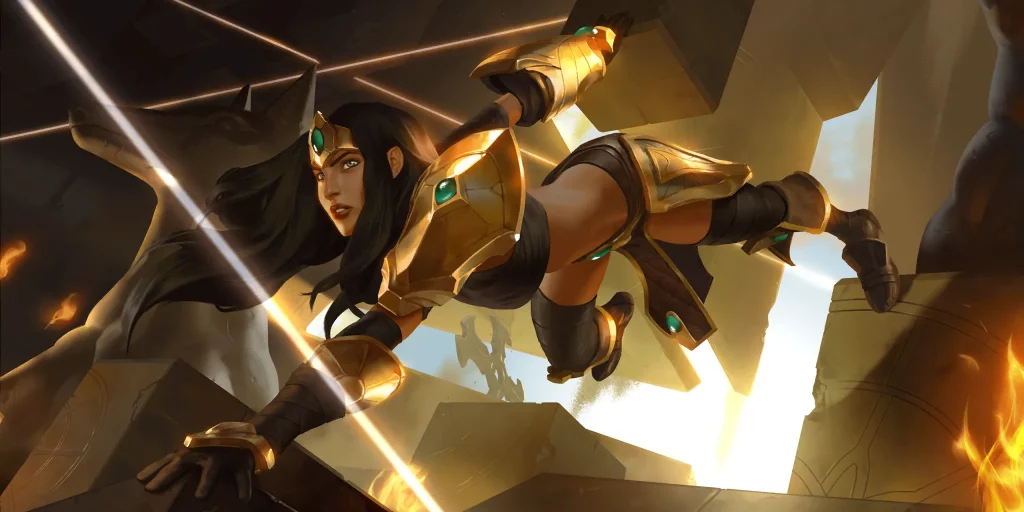
The Sivir Akshan
Akshan mulligan is rather complex and quite matchup-specific. The only rule I have for every matchup is that I want a Warlord's Palace
mulligan is rather complex and quite matchup-specific. The only rule I have for every matchup is that I want a Warlord's Palace – Akshan is ideal for this, but a Vekauran Vagabond
– Akshan is ideal for this, but a Vekauran Vagabond will do. I will mulligan aggressively for a landmark, but I will keep key cards for the specific matchup like one drops, Petricite Broadwing
will do. I will mulligan aggressively for a landmark, but I will keep key cards for the specific matchup like one drops, Petricite Broadwing , and Merciless Hunter
, and Merciless Hunter against Pantheon
against Pantheon .
.
The rest of the cards I am looking for will depend on what deck I'm facing, and who gets the attack token first. A few rules of thumb:
- One-drops can often be quite matchup-dependent keeps as they can be awkward round-one plays when attacking on round two,
- Sivir is a much stronger keep when attacking on even rounds,
- Merciless Hunter
 is a great keep against decks with key units,
is a great keep against decks with key units, - Darkin Equipment is very strong against removal decks,
- Quicksand
 is a blow-out against Quick Attack and Barrier units,
is a blow-out against Quick Attack and Barrier units, - Cataclysm
 is insanely efficient interaction for key threats like Gwen
is insanely efficient interaction for key threats like Gwen or Katarina
or Katarina ,
, - Combat tricks can be good keeps with Akshan against removal decks.
The mulligan being so nuanced, let’s look at some examples.
Against Annie Jhin
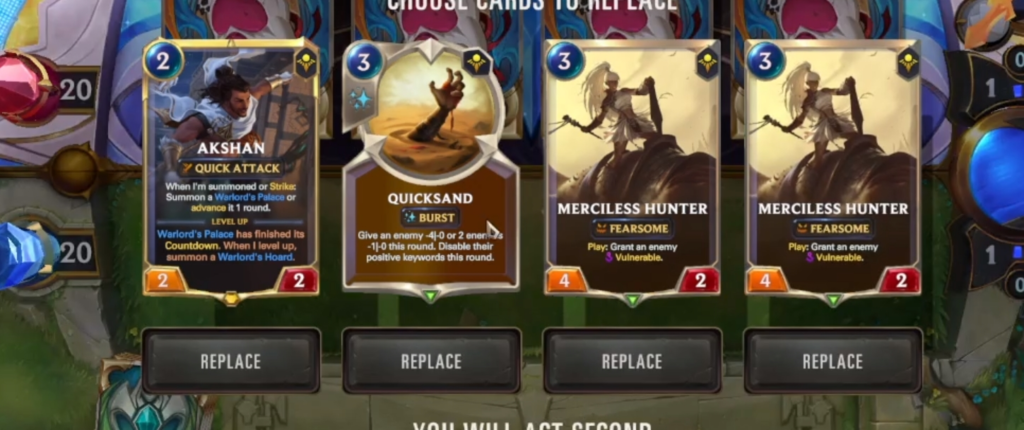
For this mulligan I would only keep Akshan . I really want to find a one-drop to get down and block. We have lots of other cards that can come down at the same time as Merciless Hunter
. I really want to find a one-drop to get down and block. We have lots of other cards that can come down at the same time as Merciless Hunter would come down.
would come down.
Quicksand could only be kept against a deck like Zed Vayne, but not against Annie Jhin.
could only be kept against a deck like Zed Vayne, but not against Annie Jhin.
Against Ezreal Seraphine Noxus
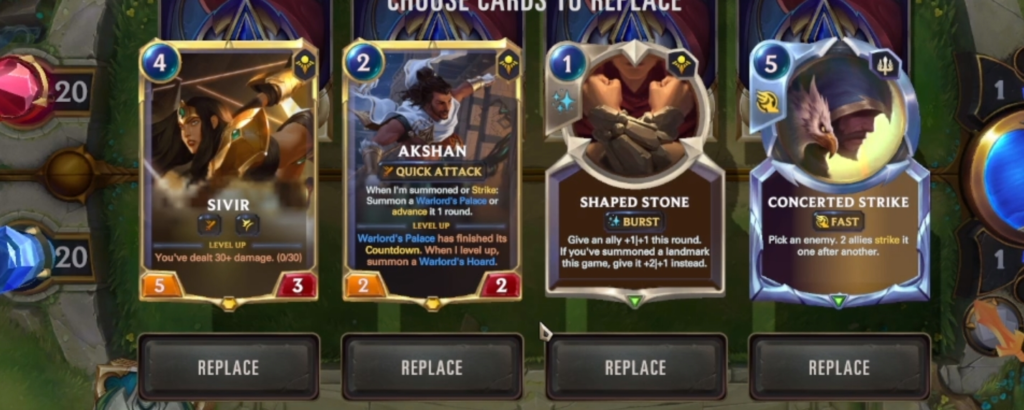
I would only keep Akshan and Shaped Stone here. Forcing an extra spell on Akshan can be quite good, especially if the extra card is a Ravenous Flock
here. Forcing an extra spell on Akshan can be quite good, especially if the extra card is a Ravenous Flock , as that can be key removal for a Ruin Runner
, as that can be key removal for a Ruin Runner or Sivir
or Sivir later. Speaking of Sivir
later. Speaking of Sivir , she would be a snap keep if I was attacking on even rounds, but attacking on odds and keeping three cards can lead to some hands that are just too low-tempo early on when against Ezreal Seraphine.
, she would be a snap keep if I was attacking on even rounds, but attacking on odds and keeping three cards can lead to some hands that are just too low-tempo early on when against Ezreal Seraphine.
Concerted Strike is not worth keeping in any current matchup, with the exception of maybe against Lee Sin
is not worth keeping in any current matchup, with the exception of maybe against Lee Sin decks.
decks.
Against Pantheon Varus
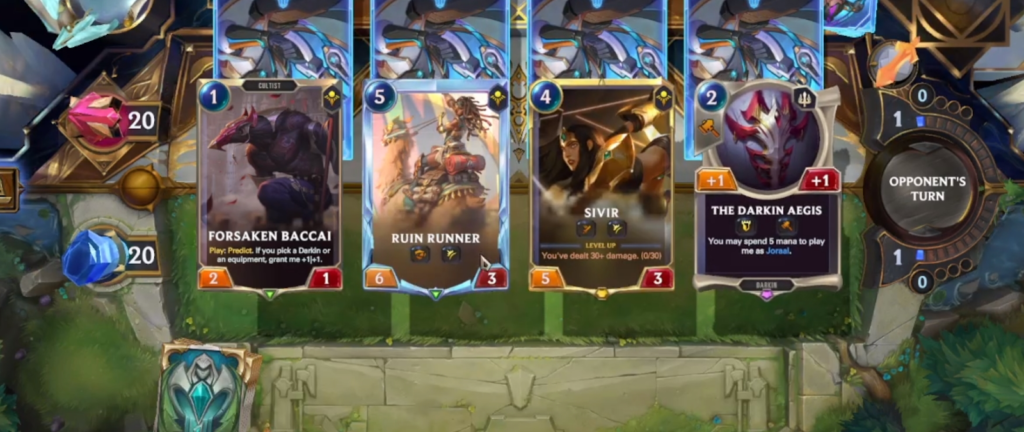
Here I would keep Forsaken Baccai and Sivir. One-drops are very good against Varus Pantheon and the Predict can help us find other key cards, while Sivir’s Quick Attack is very strong in this matchup and SpellShield keeps her safe from Furious Wielder
and Sivir. One-drops are very good against Varus Pantheon and the Predict can help us find other key cards, while Sivir’s Quick Attack is very strong in this matchup and SpellShield keeps her safe from Furious Wielder .
.
Ruin Runner is a bit too slow for this hand; we want cheap units, Challengers, and Vulnerables. The Darkin Aegis
is a bit too slow for this hand; we want cheap units, Challengers, and Vulnerables. The Darkin Aegis is also a bit too slow for this matchup, we can’t really contest their better-stated units.
is also a bit too slow for this matchup, we can’t really contest their better-stated units.
Sivir Akshan Demacia – Specific Match Up Advice
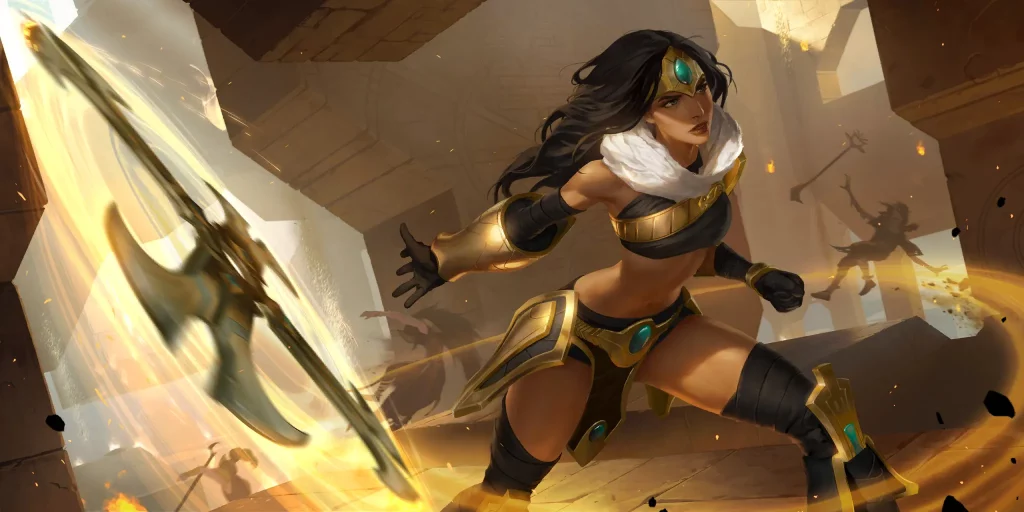
Ezreal Seraphine Noxus (Slightly Favored)
Key Cards: Akshan /Vekauran Vagabond
/Vekauran Vagabond if no Akshan, Forsaken Baccai
if no Akshan, Forsaken Baccai or Treasure Seeker
or Treasure Seeker (generally preferred), Rite of Negation
(generally preferred), Rite of Negation , Sivir
, Sivir , The Darkin Bloodletters
, The Darkin Bloodletters and The Darkin Aegis
and The Darkin Aegis
Ezreal Seraphine is a very difficult matchup, but Sivir is slightly favored if played properly.
This game fundamentally comes down to making their removal and mana awkward. When you play a very honest game against the opponent and show them your hand, they will have a very easy time removing your threats and eventually winning the game with either Ezreal or Seraphine.
It’s important to develop threats in a way that makes Ezreal Seraphine's mana awkward by bolding some spell mana to represent combat tricks, and trying to not provide high-value targets for their spells like Mystic Shot and Statikk Shock
and Statikk Shock .
.
If you force enough minor removal on minor threats like Akshan, Merciless Hunter , and units with eEquipment, you should be able to resolve more important threats like Sivir or Ruin Runner to close the game. If you have hands that lack major threats and have a lot of minor threats, it can often be more beneficial to try to tax their mana instead of removal cards.
, and units with eEquipment, you should be able to resolve more important threats like Sivir or Ruin Runner to close the game. If you have hands that lack major threats and have a lot of minor threats, it can often be more beneficial to try to tax their mana instead of removal cards.
In this matchup both Xolaani and Darkinthrall
and Darkinthrall beatdown can be good, although it really depends on the gamestate.
beatdown can be good, although it really depends on the gamestate.
Further reading: for the other side of this matchup, check my Seraphine and The Clash at Noxus – A Seraphine Ezreal LoR Deck Guide.
Viktor Seraphine (Slightly Favored)
Key Cards: Akshan /Vekauran Vagabond
/Vekauran Vagabond if no Akshan, Forsaken Baccai
if no Akshan, Forsaken Baccai or Treasure Seeker
or Treasure Seeker (generally preferred), Merciless Hunter
(generally preferred), Merciless Hunter , Sivir
, Sivir , Rite of Negation
, Rite of Negation , The Darkin Bloodletters
, The Darkin Bloodletters , and Petricite Broadwing
, and Petricite Broadwing (against Ionia versions)
(against Ionia versions)
Against Viktor Seraphine we are the aggressor. Most versions of these decks play a one-drop Elusive – take advantage of this by getting on the board quickly to be aggressive. Even if your one-drop gets Vile Feast ed, it’s good for you because it means that Vile won’t pop a SpellShield later.
ed, it’s good for you because it means that Vile won’t pop a SpellShield later.
Merciless Hunter is good to remove a Viktor or Seraphine when the opponent tries to develop those threats. Since Viktor Seraphine decks have less efficient removal than the Noxus version, they will have an even harder time dealing with our SpellShielded threats.
is good to remove a Viktor or Seraphine when the opponent tries to develop those threats. Since Viktor Seraphine decks have less efficient removal than the Noxus version, they will have an even harder time dealing with our SpellShielded threats.
Cards like Minion and Eye of the Dragon
and Eye of the Dragon can be problematic, but we have ways to get around these cards. Even if not dealt with directly, the ways these cards are facilitated can be taxed and a gameplan to win can be formulated.
can be problematic, but we have ways to get around these cards. Even if not dealt with directly, the ways these cards are facilitated can be taxed and a gameplan to win can be formulated.
Against the 
 beatdown plan. Against
beatdown plan. Against 
 and Darkinthralls can be good; just make sure that you are cautious about Quietus
and Darkinthralls can be good; just make sure that you are cautious about Quietus .
.
Further reading: for the other side of this matchup, check Yangzera's Quiet High Note – A Spooky Seraphine Viktor LoR Deck Guide.
Vayne Zed (Slightly Favored with 2x Quicksand )
)
Key Cards: Akshan /Vekauran Vagabond
/Vekauran Vagabond if no Akshan, Forsaken Baccai
if no Akshan, Forsaken Baccai , Treasure Seeker
, Treasure Seeker (generally preferred), Merciless Hunter
(generally preferred), Merciless Hunter , Quicksand
, Quicksand , Petricite Broadwing
, Petricite Broadwing , Brightsteel Protector
, Brightsteel Protector and The Darkin Aegis
and The Darkin Aegis
Defeating Zed Vayne is all about stabilizing against the opponent's threats, or racing if we can’t.
Merciless Hunter is great to interact with either of their Champions, and Quicksand
is great to interact with either of their Champions, and Quicksand cleanly handles an attacking Zed. Petricite Broadwing
cleanly handles an attacking Zed. Petricite Broadwing is great to clean up small Elusives – it’s important to deal with said Elusives eventually, or apply a fast clock after answering the Champions, as we can often be hard-pressed to find ways to block Elusive units.
is great to clean up small Elusives – it’s important to deal with said Elusives eventually, or apply a fast clock after answering the Champions, as we can often be hard-pressed to find ways to block Elusive units.
Barrier effects can be massive blow outs in the Demacia mirror, often completely invalidating an opposing attack. Buying this time can be game-winning here.
Further reading: for the other side of this matchup, check Leer's Return of Rally Elusives – A Vayne Zed LoR Deck Guide.
Rumble Vayne (Favored)
Key Cards: Merciless Hunter , Akshan
, Akshan /Vekauran Vagabond
/Vekauran Vagabond if no Akshan, Forsaken Baccai
if no Akshan, Forsaken Baccai , Treasure Seeker
, Treasure Seeker , Petricite Broadwing
, Petricite Broadwing , Brightsteel Protector
, Brightsteel Protector and Sivir
and Sivir
The Rumble Vayne matchup is all about removing their Rumble and then trading down with the rest of their board. If Rumble doesn’t run away with the game, we should rather easily grind our foe out.
and then trading down with the rest of their board. If Rumble doesn’t run away with the game, we should rather easily grind our foe out.
Merciless Hunter is the most important card against Rumble Vayne, and the best way to answer Rumble
is the most important card against Rumble Vayne, and the best way to answer Rumble , and especially when the Vulnerable is capitalized by Sivir to play around an opposing Condemn
, and especially when the Vulnerable is capitalized by Sivir to play around an opposing Condemn or Whirling Death
or Whirling Death . Petricite Broadwing
. Petricite Broadwing with a combat trick is the other way to remove Rumble somewhat reliably. Barrier effects are very strong in this matchup as a way to stop Rumble attacks.
with a combat trick is the other way to remove Rumble somewhat reliably. Barrier effects are very strong in this matchup as a way to stop Rumble attacks.
Cataclysm can be used to pop a SpellShield to set up a Quicksand
can be used to pop a SpellShield to set up a Quicksand or Concerted Strike
or Concerted Strike on Rumble. Cataclysm is also a very good answer for Vayne, as it allows you to save Challenger and Vulnerable effects for Rumble.
on Rumble. Cataclysm is also a very good answer for Vayne, as it allows you to save Challenger and Vulnerable effects for Rumble.
Further reading: for the other side of this matchup, check Card Gamer's Tumble on the Rumble – A Vayne Rumble LoR Deck Guide.
Pantheon Varus (Slightly Favored)
Key Cards: Akshan /Vekauran Vagabond
/Vekauran Vagabond if no Akshan, Forsaken Baccai
if no Akshan, Forsaken Baccai , Treasure Seeker
, Treasure Seeker , Merciless Hunter
, Merciless Hunter , Sivir
, Sivir , Petricite Broadwing
, Petricite Broadwing , and Quicksand
, and Quicksand
Beating Varus Pantheon is all about abusing the fact they have a very low unit density, and they have a hard time blocking Quick Attack units. You are the aggressor and it is very important that whenever you give up a unit for free, you are pushing lots of damage.
Merciless Hunter is a great way to push said damage by forcing their giant unit to block a one -drop. Petricite Broadwing
is a great way to push said damage by forcing their giant unit to block a one -drop. Petricite Broadwing is very good as well, often value-trading with a Wandering Shepherd
is very good as well, often value-trading with a Wandering Shepherd or Lunari Cultist
or Lunari Cultist and then acting as a Flame Chompers!
and then acting as a Flame Chompers! . Treasure Seeker
. Treasure Seeker is also incredibly strong here – if she comes into play on round one, she will almost always guarantee two chip damage, and Sandstone Charger
is also incredibly strong here – if she comes into play on round one, she will almost always guarantee two chip damage, and Sandstone Charger is also supremely effective if timed correctly.
is also supremely effective if timed correctly.
SpellShield units are a great way to make The Unforgiving Cold less effective against wide open-attacks.
less effective against wide open-attacks.
It’s important to try and end the game before Pantheon can level up. A flipped Pantheon will quickly take over the game with the right keywords. This is a matchup where you want to make 4/3 Darkinthrall
can level up. A flipped Pantheon will quickly take over the game with the right keywords. This is a matchup where you want to make 4/3 Darkinthrall s.
s.
Further reading: for the other side of this matchup, check Leer's They Can Stall Their Fate, but Cannot Deny It — A Varus Pantheon LoR Deck Guide.
Pantheon Demacia (Slightly Favored)
Demacia (Slightly Favored)
Key Cards: Akshan /Vekauran Vagabond
/Vekauran Vagabond if no Akshan, Forsaken Baccai
if no Akshan, Forsaken Baccai , Treasure Seeker
, Treasure Seeker , Merciless Hunter
, Merciless Hunter , Sivir
, Sivir , Petricite Broadwing
, Petricite Broadwing , and Quicksand
, and Quicksand
This Pantheon matchup is similar to Varus Pantheon, the main difference being that Demacia has Challenger units and more strike spells instead of freezes.
To play around their Challenger units, be more careful with developments on your round. Losing a Sivir to a random Broadwing is devastating. The strike spells shouldn’t be a huge issue as most of our key threats have SpellShield, which is hard to interact with. This is another matchup where you want to make 4/3 Darkinthrall s.
s.
Annie Jhin (Slightly Unfavored)
Key Cards: Akshan , Forsaken Baccai
, Forsaken Baccai , Treasure Seeker
, Treasure Seeker , and Petricite Broadwing
, and Petricite Broadwing .
.
Defeating Annie Jhin is all about stabilizing against their early aggression. Their unit quality is quite low and you should be able to overpower the opponent if you fend off their early aggression.
Petricite Broadwing is the best card here: it walls off a Boomcrew Rookie
is the best card here: it walls off a Boomcrew Rookie attack, and kills an Annie
attack, and kills an Annie for free. Jhin
for free. Jhin should be removed ASAP if ever played out. Make sure to maximize your Nexus Health.
should be removed ASAP if ever played out. Make sure to maximize your Nexus Health.
Further reading: for the other side of this matchup, check Yangzera's Annie goes to Stack School – A Jhin Annie Aggro Guide.
Gwen Katarina (Slightly Favored)
Key Cards: Akshan /Vekauran Vagabond
/Vekauran Vagabond if no Akshan, Forsaken Baccai
if no Akshan, Forsaken Baccai , Treasure Seeker
, Treasure Seeker , Merciless Hunter
, Merciless Hunter , Sivir
, Sivir , Petricite Broadwing
, Petricite Broadwing , Quicksand
, Quicksand , and Concerted Strike
, and Concerted Strike .
.
The way you tend to lose against Gwen Katarina is by not being able to race the The Harrowing , or by letting a key threat go unchecked for too long. The Gwen Katarina matchup is very dynamic in how you will be asked to transition from the Control deck into the Beatdown.
, or by letting a key threat go unchecked for too long. The Gwen Katarina matchup is very dynamic in how you will be asked to transition from the Control deck into the Beatdown.
Cards like Merciless Hunter , Cataclysm
, Cataclysm , Quicksand
, Quicksand , and Concerted allow us to easily answer these key threats – from there you just need to make sure you have your own threats to end the game, or a Rite of Negation
, and Concerted allow us to easily answer these key threats – from there you just need to make sure you have your own threats to end the game, or a Rite of Negation to answer the enemy Harrowing.
to answer the enemy Harrowing.
Further reading: for the other side of this matchup, check Scissorsbox's Hallowed Attacks and Harrowing Combos – A Katarina Gwen Deck Guide.
Lee Sin Akshan (Unfavored)
Key Cards: Akshan /Vekauran Vagabond
/Vekauran Vagabond if no Akshan, Forsaken Baccai
if no Akshan, Forsaken Baccai , Treasure Seeker
, Treasure Seeker , Merciless Hunter
, Merciless Hunter , Sivir
, Sivir , and Concerted Strike
, and Concerted Strike
Lee Sin Akshan is hard because we have an incredibly difficult time being the Beatdown when Lee Sin is on board – but this isn’t a match up we can play as the Control deck, either.
With the addition of Momentous Choice , it’s very difficult to kill Lee Sin on round five with a Concerted Strike, let alone on a later round when the opponent can have a Deny
, it’s very difficult to kill Lee Sin on round five with a Concerted Strike, let alone on a later round when the opponent can have a Deny backup.
backup.
When they don’t draw Lee it shouldn’t be too hard for you to maintain a bigger board and more tempo to lead to a victory. If the opponent has Lee you will have to start to play riskier, though, as the game is in a bad position. This is a matchup where you want to make 4/3 Darkinthrall s.
s.
Further reading: for the other side of this matchup, check Leer's Kickin’ to Victory – An Akshan Lee Sin Deck Guide.
Swain Bilgewater Decks (Slightly Unfavored)
Key Cards: Akshan /Vekauran Vagabond
/Vekauran Vagabond if no Akshan, Forsaken Baccai
if no Akshan, Forsaken Baccai , Treasure Seeker
, Treasure Seeker , Petricite Broadwing
, Petricite Broadwing , The Darkin Aegis
, The Darkin Aegis , Ruin Runner
, Ruin Runner , Sivir
, Sivir , and Concerted Strike
, and Concerted Strike .
.
Against Miss Fortune Swain it’s important to try and stabilize early. Merciless Hunter can be important in this matchup to remove Miss Fortune
can be important in this matchup to remove Miss Fortune . If you don’t take too much damage early and don’t let a level-two Swain Nexus-strike you, you should be in a very good position.
. If you don’t take too much damage early and don’t let a level-two Swain Nexus-strike you, you should be in a very good position.
Against Twisted Fate Swain it's harder to play around their cards, but the matchup is slightly easier I would say. The TF version plays a good bit more removal than its MF counterpart – this isn’t the end of the world, as our deck has SpellShield units and the Darkin Aegis to be strong against this Noxus Bilgewater removal package. It’s just important to not play too many SpellShield units at once, so as to avoid giving the opponent a good Red Card
Swain it's harder to play around their cards, but the matchup is slightly easier I would say. The TF version plays a good bit more removal than its MF counterpart – this isn’t the end of the world, as our deck has SpellShield units and the Darkin Aegis to be strong against this Noxus Bilgewater removal package. It’s just important to not play too many SpellShield units at once, so as to avoid giving the opponent a good Red Card or Make it Rain
or Make it Rain to pop multiple SpellShields with one card.
to pop multiple SpellShields with one card.
If you avoid this mistake and keep removing Swains and The Leviathans, you should be able to grind the game out just fine.
Xolaani tends to be a bit more useful than Darkinthrall
tends to be a bit more useful than Darkinthrall as she will keep taxing cards like Ravenous Flock
as she will keep taxing cards like Ravenous Flock and Disintegrate
and Disintegrate . She is also a good blocker for Swain or Leviathan.
. She is also a good blocker for Swain or Leviathan.
Further reading: for the other side of this matchup, check PakiInPyjamas' By Her Guns Shall Noxus Rise – A Miss Fortune Swain LoR Deck Guide.
Closing Thoughts
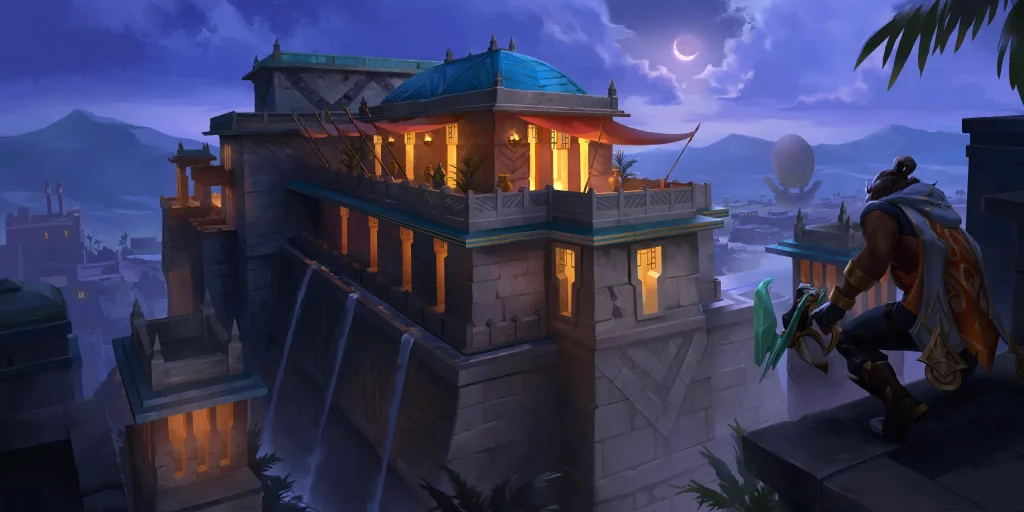
I hope you found this updated deck guide useful!
Sivir Akshan
Akshan is a deck that holds a special place in my heart, as is dear to many others pilots in our community. This is a guide I always wanted to write, and with the addition of Equipment I am ecstatic I finally got my opportunity to share my thoughts about the deck. I truly don’t think I would be the player I am today if I had never played this deck.
is a deck that holds a special place in my heart, as is dear to many others pilots in our community. This is a guide I always wanted to write, and with the addition of Equipment I am ecstatic I finally got my opportunity to share my thoughts about the deck. I truly don’t think I would be the player I am today if I had never played this deck.
It’s certainly not among the strongest LoR decks right now, as it’s a bit of a fair deck nowadays – it is, however, a very rewarding deck to play that boasts a positive spread against the majority of the field.
Reasonable odds against almost every deck, strong evasive threats, efficient cards, plenty of value, a powerful finisher, a heavy reliance on strong fundamentals, and tons of potential lines… This deck has everything a Card Gamer could want.
Thank you for taking the time to read this love letter. If you have any questions about the deck or suggestions, feel free to reach out over Twitter (https://twitter.com/CardGamerLoR) or Discord (Card Gamer #6777).
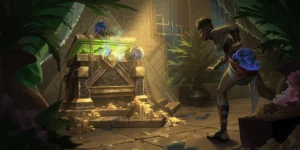



 or Katarina
or Katarina ,
,